Dangerous rashes. Life-Threatening Skin Rashes: When to Seek Emergency Medical Care
Is a skin rash serious. How to differentiate between common and dangerous rashes. When should you seek immediate medical attention for a rash. What are the symptoms of life-threatening skin conditions.
Understanding the Spectrum of Skin Rashes
Skin rashes are a common occurrence that can range from mild irritations to severe, life-threatening conditions. While most rashes are benign and resolve on their own or with over-the-counter treatments, some can be indicative of serious underlying health issues. It’s crucial to understand the different types of rashes and recognize when medical attention is necessary.
Common Types of Non-Threatening Rashes
Many rashes, while uncomfortable, are not typically dangerous. These include:
- Heat rash (miliaria)
- Psoriasis
- Eczema
- Ringworm (tinea corporis)
- Rosacea
- Swimmer’s itch (cercarial dermatitis)
- Hot tub rash (Pseudomonas dermatitis/folliculitis)
These conditions often cause itching, scaling, and discomfort but generally do not pose a significant health risk. However, persistent or severe symptoms should still be evaluated by a healthcare professional to ensure proper treatment and rule out more serious conditions.
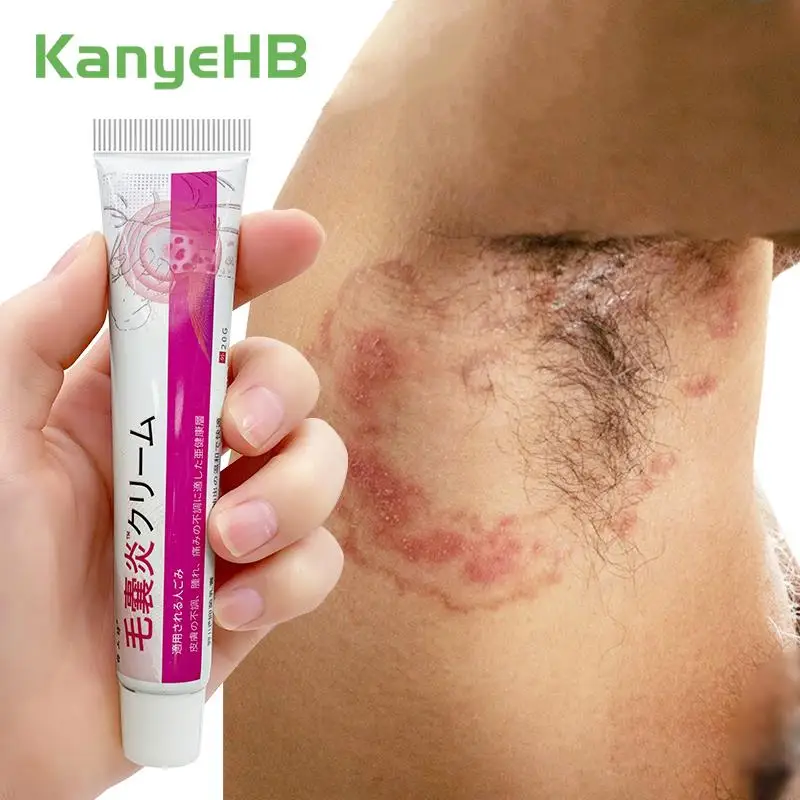
Recognizing Potentially Dangerous Rashes
Certain rashes can be signs of life-threatening conditions that require immediate medical intervention. These rashes often have distinctive characteristics that set them apart from more benign skin issues.
Key Features of Dangerous Rashes
How can you identify a potentially dangerous rash? Look for these signs:
- Widespread coverage of the body
- Involvement of mucous membranes (mouth, nose, eyes)
- Presence of small blisters on top of rash ‘bumps’
- Accompanying pain or fever
- Rapid onset and progression
If you observe these symptoms, it’s crucial to seek emergency medical care immediately. Self-diagnosis can be risky, and prompt professional evaluation is essential for proper treatment.
Life-Threatening Skin Conditions and Their Associated Rashes
Several severe medical conditions can manifest with skin rashes as a primary symptom. Understanding these conditions can help you recognize when to seek urgent care.
Stevens-Johnson Syndrome (SJS)
Stevens-Johnson Syndrome is a rare but serious disorder affecting the skin and mucous membranes. It often begins with flu-like symptoms followed by a painful rash that spreads and blisters.

Why is SJS so dangerous? The condition causes the top layer of skin to detach from the lower layers, leading to severe complications if left untreated. Prompt medical intervention is crucial for managing SJS and preventing life-threatening complications.
Toxic Epidermal Necrolysis (TEN)
Toxic Epidermal Necrolysis is considered a more severe form of Stevens-Johnson Syndrome. It involves widespread skin detachment and can affect multiple organ systems.
What makes TEN a medical emergency? The extensive skin involvement in TEN can lead to severe fluid loss, electrolyte imbalances, and increased risk of infection. Immediate hospitalization and specialized care are necessary to manage this condition effectively.
Pemphigus Vulgaris (PV)
Pemphigus Vulgaris is an autoimmune disorder characterized by painful blisters on the skin and mucous membranes. The blisters easily rupture, leaving raw, painful areas prone to infection.
How does PV differ from other blistering conditions? PV blisters are caused by the body’s immune system attacking the proteins that hold skin cells together. This leads to widespread blistering that can be life-threatening if not properly managed.

Identifying Staphylococcal Scalded Skin Syndrome (SSS)
Staphylococcal Scalded Skin Syndrome is a severe skin infection primarily affecting infants and young children. It’s caused by toxins produced by certain strains of Staphylococcus aureus bacteria.
Symptoms and Progression of SSS
The condition typically begins with fever and skin tenderness, rapidly progressing to widespread redness and blistering. The skin may appear scalded, hence the name.
Why is SSS particularly dangerous for young children? Their immune systems are less developed, making them more susceptible to the toxins produced by the bacteria. Additionally, the rapid skin loss can lead to severe dehydration and electrolyte imbalances, requiring immediate medical intervention.
Understanding Toxic Shock Syndrome (TSS)
Toxic Shock Syndrome is a rare but life-threatening condition caused by certain bacterial toxins. While it’s often associated with tampon use, it can affect anyone, including men and children.
Recognizing TSS Symptoms
TSS typically presents with a sudden high fever, low blood pressure, and a sunburn-like rash on the palms and soles that can spread to other parts of the body.
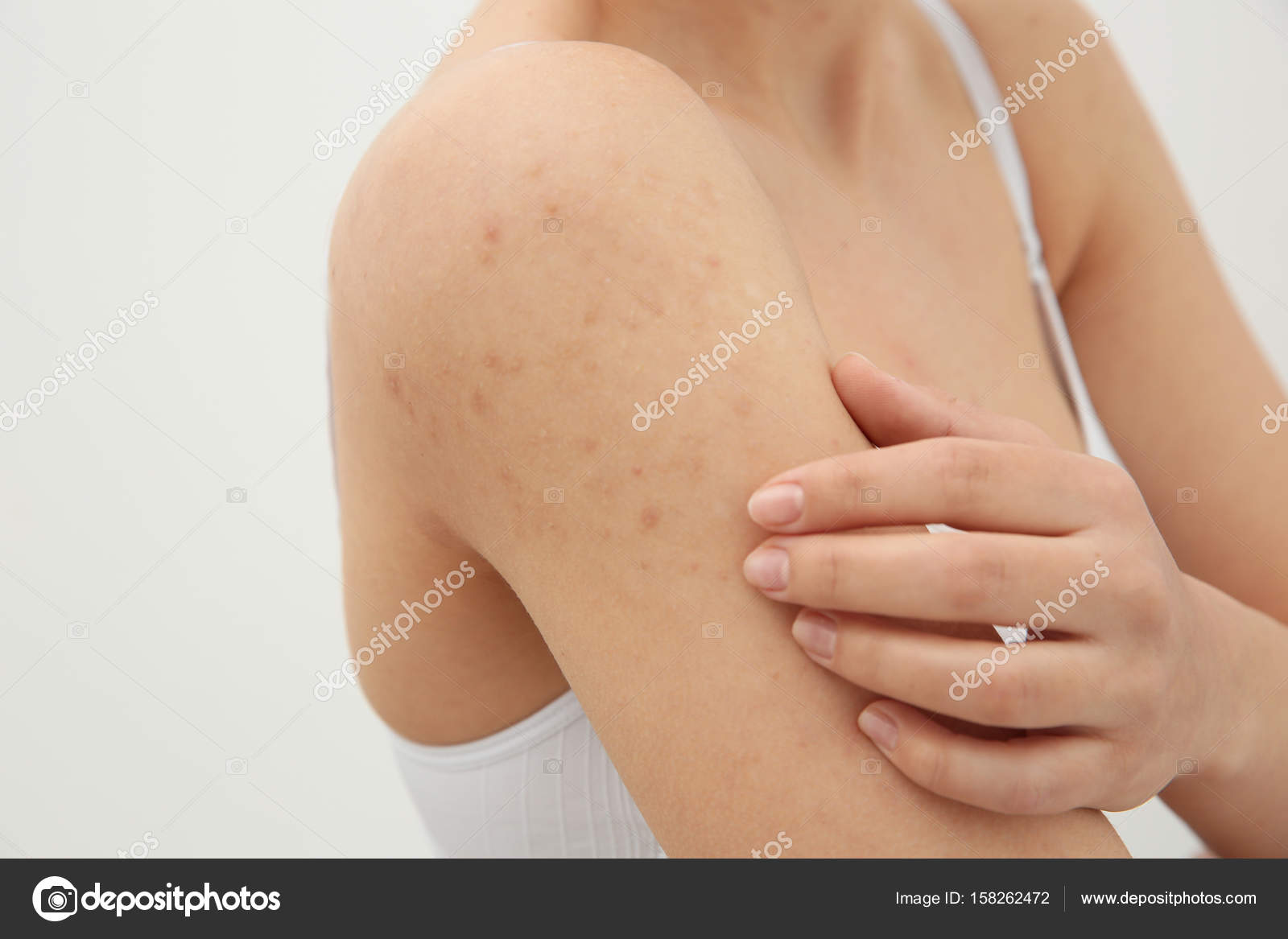
Why is early recognition of TSS crucial? The condition can rapidly progress to organ failure and shock if not treated promptly. Immediate medical attention is necessary to administer antibiotics and supportive care.
When to Seek Emergency Medical Care for a Rash
Given the potential severity of certain skin conditions, it’s important to know when to seek immediate medical attention for a rash.
Red Flags Requiring Urgent Evaluation
Consider the following symptoms as warning signs that warrant emergency care:
- Rapid spreading of the rash
- Fever accompanying the rash
- Blistering, especially if it involves a large portion of the body
- Involvement of the mouth, eyes, or genitals
- Signs of infection (increasing redness, warmth, pus)
- Difficulty breathing or swallowing
- Dizziness or fainting
How quickly should you seek care if you notice these symptoms? Don’t wait—head to the nearest emergency room or call for emergency services immediately. Timely intervention can be life-saving in cases of severe skin reactions.
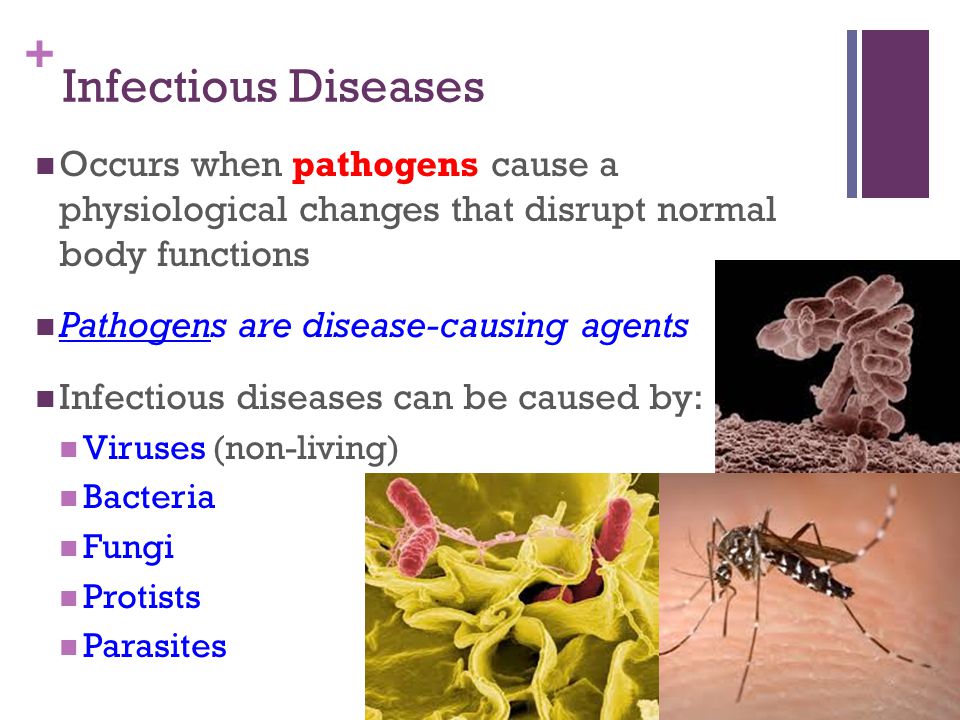
Diagnostic Approaches for Serious Skin Conditions
When evaluating potentially dangerous rashes, healthcare providers use a combination of clinical examination and diagnostic tests to determine the underlying cause and appropriate treatment.
Common Diagnostic Methods
What tools do doctors use to diagnose serious skin conditions? Here are some common approaches:
- Detailed medical history and physical examination
- Skin biopsy to examine tissue under a microscope
- Blood tests to check for signs of infection or autoimmune disorders
- Cultures to identify specific bacteria or fungi
- Patch testing for allergic reactions
Why is a comprehensive diagnostic approach important? Accurate diagnosis is crucial for determining the most effective treatment plan and preventing complications. In some cases, multiple tests may be necessary to rule out various conditions and pinpoint the exact cause of the rash.
Treatment Strategies for Life-Threatening Skin Conditions
Managing severe skin reactions often requires a multidisciplinary approach and may involve intensive care. The specific treatment depends on the underlying cause but generally focuses on stopping the progression of the condition and supporting the body’s healing processes.

Common Treatment Modalities
What treatments are typically used for life-threatening skin conditions? Here are some common approaches:
- Immediate discontinuation of any suspected triggering medications
- Intravenous fluids to prevent dehydration
- Pain management
- Antibiotics for bacterial infections
- Corticosteroids to reduce inflammation
- Immunosuppressive drugs for autoimmune conditions
- Specialized wound care and skin grafting in severe cases
Why is hospitalization often necessary for these conditions? Many life-threatening skin reactions require close monitoring, frequent adjustments to treatment, and specialized care that can only be provided in a hospital setting. The intensive care helps prevent complications and supports the body’s healing process.
Long-Term Management and Follow-Up
Recovery from severe skin conditions can be a lengthy process. After the acute phase, patients often require ongoing care and monitoring.
What does long-term management involve? It may include:
- Regular follow-up appointments with dermatologists and other specialists
- Continued wound care and skin protection
- Management of potential complications or sequelae
- Psychological support to cope with the emotional impact of the condition
- Lifestyle modifications to prevent recurrence
Why is ongoing care crucial? Many severe skin conditions can have lasting effects on the body and may increase the risk of future reactions. Proper follow-up ensures that any lingering issues are addressed and helps prevent recurrence.
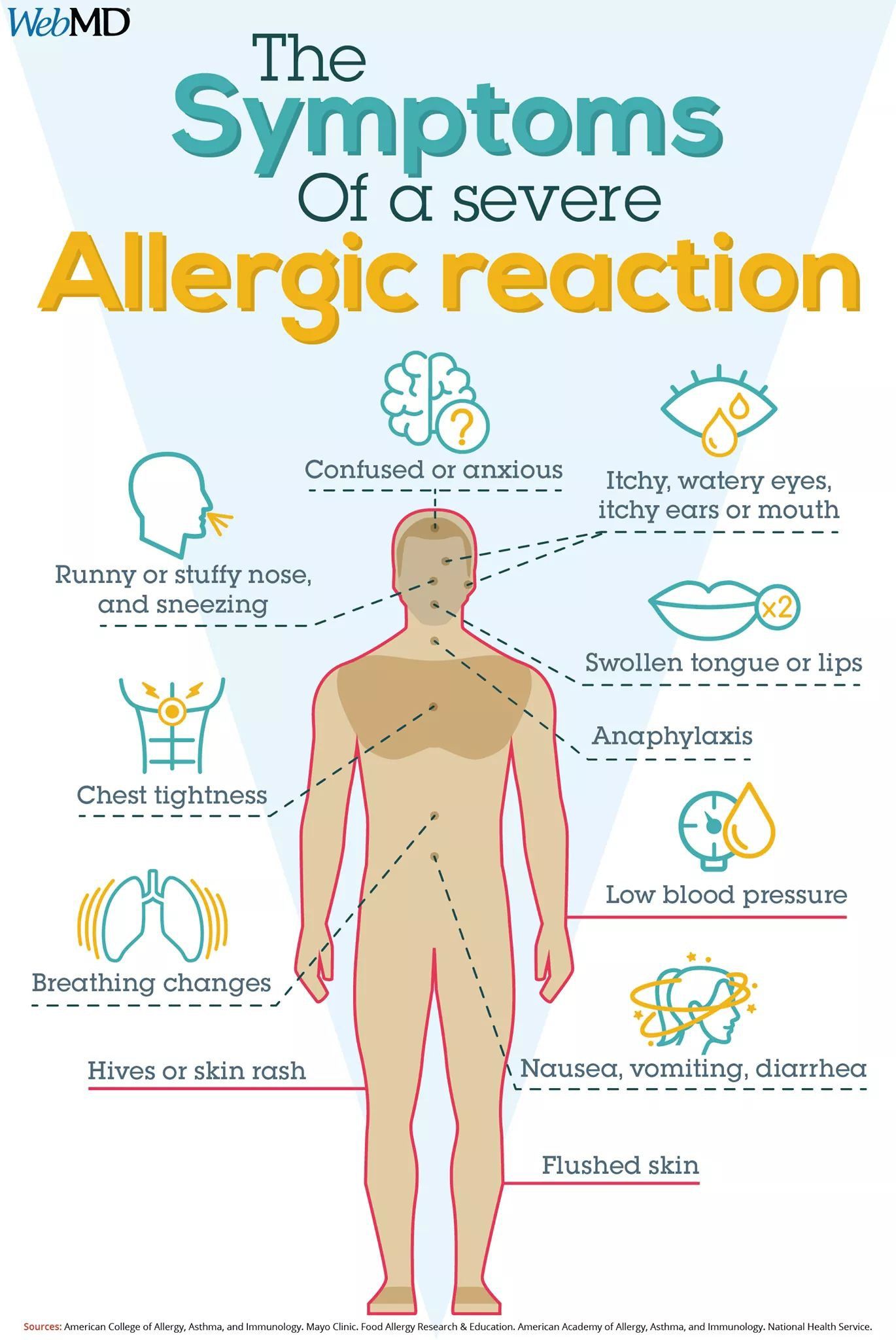
Preventing Severe Skin Reactions
While not all dangerous skin conditions can be prevented, there are steps you can take to reduce your risk of developing severe reactions.
Risk Reduction Strategies
How can you minimize your risk of experiencing a life-threatening skin reaction? Consider these preventive measures:
- Be aware of your allergies and avoid known triggers
- Use medications as prescribed and report any unusual reactions to your healthcare provider
- Practice good hygiene to prevent bacterial and fungal infections
- Protect your skin from excessive sun exposure
- Stay up-to-date with vaccinations, particularly those that prevent infections associated with skin reactions
- Maintain a healthy lifestyle to support your immune system
Why is prevention important? While some severe skin reactions occur without warning, many can be avoided by taking proactive steps to protect your skin and overall health. Being vigilant about potential triggers and maintaining good skin care practices can significantly reduce your risk.

Educating Others About Skin Health
Spreading awareness about the potential seriousness of skin conditions can help others recognize warning signs and seek timely medical care.
How can you contribute to skin health awareness? Consider these actions:
- Share information about dangerous rashes with friends and family
- Encourage others to seek medical attention for persistent or concerning skin issues
- Support organizations that promote skin health and research into severe skin conditions
- Advocate for better education about skin health in schools and workplaces
Why is community education important? Increased awareness can lead to earlier detection and treatment of serious skin conditions, potentially saving lives and reducing the severity of outcomes for those affected.
The Role of Dermatologists in Managing Severe Skin Conditions
Dermatologists play a crucial role in diagnosing and managing life-threatening skin conditions. Their specialized knowledge and experience are invaluable in navigating complex cases and coordinating comprehensive care.

Specialized Care and Expertise
What unique skills do dermatologists bring to the treatment of severe skin reactions? Consider these aspects:
- Advanced diagnostic capabilities, including specialized skin examinations and biopsies
- In-depth knowledge of rare and complex skin disorders
- Expertise in managing the systemic effects of skin conditions
- Ability to coordinate multidisciplinary care teams
- Access to cutting-edge treatments and clinical trials
Why is seeing a dermatologist important for serious skin issues? Their specialized training allows them to quickly recognize dangerous conditions and initiate appropriate treatment, potentially improving outcomes and reducing complications.
Ongoing Research and Advancements
Dermatologists are at the forefront of research into new treatments and understanding of severe skin conditions.
How does ongoing research benefit patients? It leads to:
- Development of more effective treatments
- Improved diagnostic techniques
- Better understanding of the underlying causes of severe skin reactions
- Potential for preventive strategies
- Enhanced quality of life for those affected by chronic skin conditions
Why is staying informed about dermatological advancements important? Keeping up with the latest research can provide hope for those affected by severe skin conditions and may open up new treatment options for previously challenging cases.
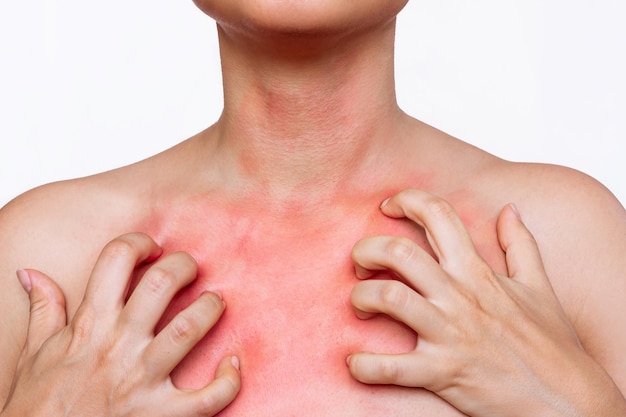
In conclusion, while most skin rashes are benign and easily treatable, it’s crucial to be aware of the signs that may indicate a more serious condition. By understanding the characteristics of dangerous rashes and knowing when to seek emergency care, you can ensure prompt treatment and potentially life-saving interventions. Remember, when in doubt about a skin condition, it’s always best to consult with a healthcare professional. Your skin’s health is an important indicator of your overall well-being, and taking it seriously can make a significant difference in your health outcomes.
Is a Skin Rash Serious?
Generally, skin rashes are not dangerous but, instead, constitute a nuisance and disruption to our everyday lives. There are cases, however, when a skin rash is caused by a life-threatening condition. In these cases, the sufferer must seek medical attention immediately. The causes of rashes are varied, and diagnosis requires the experience and knowledge of a medical professional. It is never a good idea to self-diagnose, so should you have a persistent rash or skin infection, you should seek immediate medical advice.
Many of the most common types of rashes are not life-threatening but may be difficult to treat and cause extended discomfort. For best results, a person with rashes should visit their primary care physician who may prescribe ointments or other medications to help heal the rash and ease the pain and itching. Most rashes are accompanied by itchy, scaly skin but may also cause other more severe conditions.
Some of the most common types of rashes are listed below:
- Heat rash (miliaria)
- Psoriasis
- Shingles (herpes zoster)
- Intertrigo
- Eczema
- Ringworm of the body (tinea corporis)
- Lichen planus
- Granuloma annulare
- Rosacea
- Swimmer’s itch (cercarial dermatitis)
- Hot tub rash (Pseudomonas dermatitis/folliculitis)
Generally, these and other types of common rashes are not life-threatening, but they can cause itching and, in some cases, extreme discomfort. It is best to see your primary care physician or a dermatologist obtain an accurate diagnosis and treatment. If you do not have a primary care physician, please visit one of Emergency Hospital Systems’ emergency rooms. We are dedicated to providing not only emergency services but are also happy to act as your primary care medical provider. Please call for an appointment (281-592-5400) or walk-in. Our wait times are short, and there’s plenty of free parking.
It is best to see your primary care physician or a dermatologist obtain an accurate diagnosis and treatment. If you do not have a primary care physician, please visit one of Emergency Hospital Systems’ emergency rooms. We are dedicated to providing not only emergency services but are also happy to act as your primary care medical provider. Please call for an appointment (281-592-5400) or walk-in. Our wait times are short, and there’s plenty of free parking.
While many common rashes are not dangerous, some life-threatening conditions also produce rashes. Any of these should be treated immediately by a physician. These rashes usually affect most of or the entire body and show up on both the skin and the body’s mucous membrane. Also, small blisters will generally appear on the top of rash ‘bumps.’ Often these rashes and blisters are painful, and can even extend into the lining of the nose and mouth. As with all medical conditions, self-diagnosis is not recommended. Instead, you should visit an emergency room immediately and let a trained professional evaluate your condition and, if needed, prescribe a treatment.
Below are some of the most severe types of medical problems that have associated rashes. Professional knowledge is required to make a proper diagnosis, so an immediate visit to an emergency room is needed.
- Stevens-Johnson syndrome (SJS)
- Toxic epidermal necrolysis (TEN)
- Pemphigus Vulgaris (PV)
- Staphylococcal scalded skin syndrome (SSS)
- Toxic shock syndrome (TSS)
Should you develop a rash, it is essential that you see a physician promptly who can review your symptoms and make a proper diagnosis. Because of the variety of outbreaks and the many different underlying causes, it is important that you see your primary physician or, if you do not have a primary care physician, visit one of Emergency Hospital Systems’ four conveniently located ERs. We have facilities open 24/7/365 in Cleveland (2), Spring, and Humble. Feel free to call for an appointment or just walk-in. Our physicians and medical staff will be happy to answer questions or assist you — phone, 281-592-5400
Is Your Skin Rash a Sign of Something More Serious?
Do you have a rash? Know the difference between common conditions and when it could signal a more serious health concern.

Rashes are caused by exposure to any number of environmental allergens such as food, weather, sunlight and even stress.
Many of these can be treated effectively with over-the-counter medications. But in some cases, your skin may be telling you that you have a more serious condition.
“In dermatology, we treat a wide variety of rashes, from life-threatening to simply bothersome,” says Ashley B. Crew, MD, a dermatologist at Keck Medicine of USC and assistant professor of clinical dermatology at the Keck School of Medicine of USC.
Because skin is the largest organ in the body, it can show signs of an internal disease before the disease shows typical symptoms.
When is a rash more than a rash?
A minor rash is easily treatable with antihistamines or hydrocortisone cream. But you should speak with your doctor if you have any of the following symptoms:
- Do you have a fever or pain accompanying your rash? It could be a sign of infection and should quickly be evaluated by your doctor.

- Do you have blisters? A rash that begins to blister but that can’t be explained by exposure to poison oak or ivy could be shingles.
- Does your rash persist without improvement from over-the-counter medications? If antihistamines or hydrocortisone cream offer no improvement, a visit with your doctor is advised.
- Is there any bruising or swelling around it? The rash may be preventing proper blood flow.
- Is there any discharge or secretion from the rash? Any colored discharge or bad odor is a sign of infection.
- Did the rash appear and spread quickly? This could be an allergic reaction to medication or food. Seek immediate medical attention if breathing becomes difficult.
- Is the rash circular in shape? This could be a sign of Lyme disease.
- Do you have skin discolorations or changes in your skin texture? A yellowing of the skin could indicate liver disease. Hardening and darkening of the skin could be signs of diabetes.
Common adult rashes
Shingles
If you’ve ever had chicken pox or been vaccinated against chicken pox, you’re at risk of developing shingles later in life.
Shingles are reddish patches of skin with small bumps that blister and itch. Pain can be moderate or severe, lasting up to five days and taking up to four weeks to heal.
When your immune system is weakened, perhaps by something as simple as a cold, the shingles virus can infect your skin cells. Typically, you will feel tired before the rash appears and might experience a mild fever.
Hives
Hives appear as a rapidly spreading, red, raised and itchy rash in splotches or all over the body. Caused by an allergic reaction to medications or food, hives can be a sign of a life-threatening problem when accompanied by difficulty breathing and a drop in blood pressure.
Allergic reaction to medications
Rashes can develop from an allergy to a medication, also known as DRESS syndrome (drug reaction with eosinophilia and systemic symptoms). This condition may take weeks to appear after you start a new medication. Common symptoms that accompany the rash are fever and inflammation in the liver, heart, lungs or thyroid.
“Some of the rashes we see are dangerous because of the rash themselves,” Crew says. “An example of this is a severe drug eruption called Stevens-Johnson syndrome or toxic epidermal necrolysis, where people develop sudden peeling skin on mucosal surfaces. Other serious rashes treated by dermatology can be dangerous because they signify other underlying issues — examples of this include a cutaneous vasculitis or lupus rash.”
by Heidi Tyline King
Rashes can be indications of a more serious problem. If you’re unsure of the type of rash you have or if it’s taking days or weeks to heal, seek help from one of the dermatology experts at Keck Medicine of USC. If you’re in the Los Angeles area, make an appointment by calling (800) USC-CARE (800-872-2273) or by visiting https://dermatology.keckmedicine.org/
Drug Rashes | Johns Hopkins Medicine
What are Drug Rashes?
Drug rashes are the body’s reaction to a certain medicine. The type of rash that happens depends on the medicine causing it and your response. Medicines have been linked to every type of rash, ranging from mild to life-threatening. The timing of the rash can also vary. It may appear right away or a few weeks after you first take the medicine.
The type of rash that happens depends on the medicine causing it and your response. Medicines have been linked to every type of rash, ranging from mild to life-threatening. The timing of the rash can also vary. It may appear right away or a few weeks after you first take the medicine.
Rashes caused by medicines can be put into one of 3 groups:
Rashes caused by an allergic reaction to the medicine
Rashes as an unwanted side effect of a certain medicine
Rashes from extreme sensitivity to sunlight caused by the medicine
What are the different types of rashes caused by medicines?
| Type of rash | Symptoms | Cause |
|---|---|---|
| Acne | Pimples and red areas that appear most often on the face, shoulders, and chest | Anabolic steroids, corticosteroids, bromides, iodides, and phenytoin |
| Exfoliative dermatitis | Red, scaly skin that may thicken and peel and involve the entire body | Antibiotics that contain sulfa, barbiturates, isoniazid, penicillins, and phenytoin |
| Fixed drug eruption | A dark red or purple rash that reacts at the same site | Antibiotics and phenolphthalein (found in certain laxatives) |
| Hives | Raised red bumps | Aspirin, certain medicine dyes, penicillins, and many other medicines |
| Morbilliform or maculopapular rash | A flat, red rash that may include pimples similar to the measles | Antibiotics, antihypertensives, and contrast dye are among more common medicines, but any medicine can cause this rash |
| Purpuric eruptions | Purple areas on the skin, often on the legs | Some anticoagulants and diuretics |
| Stevens-Johnson syndrome | Blisters or a hive-like rash on the lining of the mouth, vagina, or penis that can spread all over the body | Antibiotics that contain sulfa, barbiturates, penicillins, and certain medicines used for seizures and diabetes |
How are drug rashes diagnosed?
Diagnosing a rash caused by a reaction to medicine is complicated.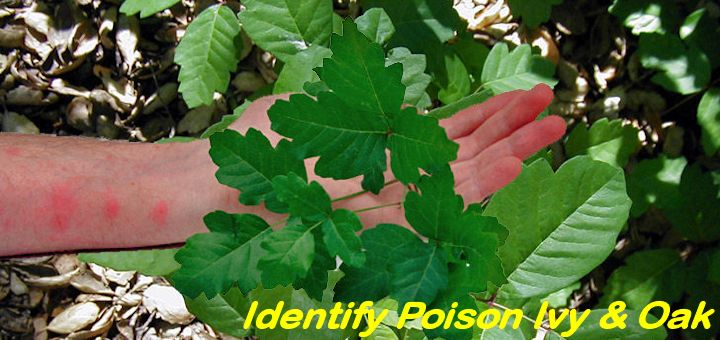 First, a complete review of all prescription and over-the-counter medicines should be done. Even a small amount of a medicine can cause a major reaction in the skin. In addition, the reaction can occur even after you have taken a medicine for a long time. Your healthcare provider will usually advise you to stop taking any medicine that is not needed to sustain your life, to see if the reaction eases. Your provider may give you a substitute medicine, if possible. In some cases, a skin biopsy may be done to help with the diagnosis.
First, a complete review of all prescription and over-the-counter medicines should be done. Even a small amount of a medicine can cause a major reaction in the skin. In addition, the reaction can occur even after you have taken a medicine for a long time. Your healthcare provider will usually advise you to stop taking any medicine that is not needed to sustain your life, to see if the reaction eases. Your provider may give you a substitute medicine, if possible. In some cases, a skin biopsy may be done to help with the diagnosis.
Treatment for drug rashes
The condition usually clears up if you stop taking the medicine that is causing the reaction. Other treatment may include:
Corticosteroids
Antihistamines
Allergic reactions can be serious and even fatal. If a rash develops, it is important to contact your healthcare provider right away.
Rash Decisions: An Approach to Dangerous Rashes Based on Morphology
Background:
Rash is a common complaint in the emergency department. Many causes of rash are benign; however, some patients may have a life-threatening diagnosis.
Many causes of rash are benign; however, some patients may have a life-threatening diagnosis.
Objective:
This review will present an algorithmic approach to rashes, focusing on life-threatening causes of rash in each category.
Discussion:
Rash is common, with a wide range of etiologies. The differential is broad, consisting of many conditions that are self-resolving. However, several conditions associated with rash are life threatening. Several keys can be utilized to rapidly diagnose and manage these deadly rashes. Thorough history and physical examination, followed by consideration of red flags, are essential. This review focuses on four broad categories based on visual and tactile characteristic patterns of rashes: petechial/purpuric, erythematous, maculopapular, and vesiculobullous. Rashes in each morphologic group will be further categorized based on clinical features such as the presence or absence of fever and distribution of skin lesions.
Rashes in each morphologic group will be further categorized based on clinical features such as the presence or absence of fever and distribution of skin lesions.
Conclusions:
Rashes can be divided into petechial/purpuric, erythematous, maculopapular, and vesiculobullous. After this differentiation, the presence of fever and systemic signs of illness should be assessed. Through the breakdown of rashes into these classes, emergency providers can ensure deadly conditions are considered.
Keywords:
erythema; maculopapular; petechiae; purpura; rash; vesiculobullous.
Serious childhood rashes | Pregnancy Birth and Baby
Many rashes are harmless, but a rash on your baby’s skin might indicate a serious condition that requires medical treatment.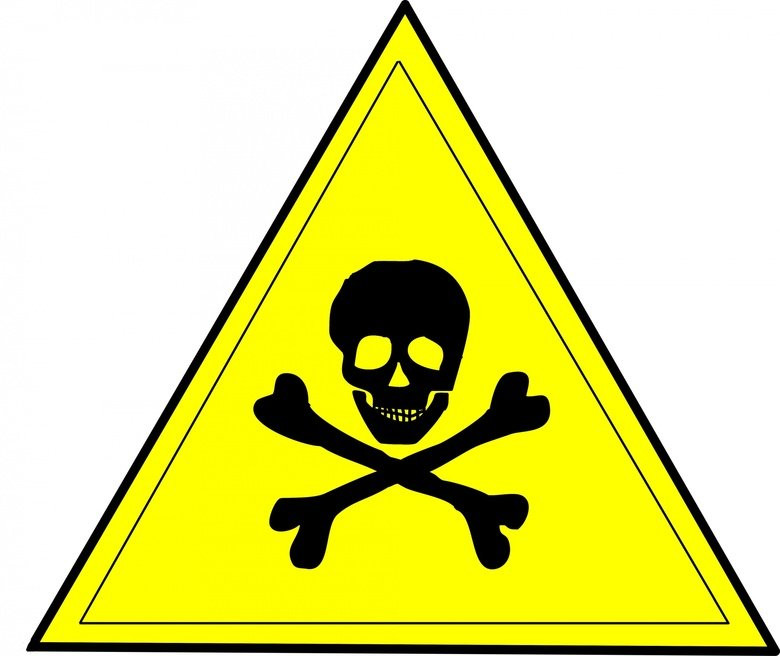 You should take your child to the doctor if they have a rash and persistent high temperature, cold or cough symptoms, or swollen neck glands.
You should take your child to the doctor if they have a rash and persistent high temperature, cold or cough symptoms, or swollen neck glands.
You can protect your child against some of these diseases, including measles, chickenpox and some types of meningococcal disease, with routine immunisations.
If you think your child’s rash is not serious, find out more from this article on common childhood rashes.
Meningitis rash
If you think your child might have meningitis rash, seek medical attention immediately or call triple zero (000) and ask for an ambulance.
Meningitis rash (also known as meningococcal rash) appears as tiny red or purple pin pricks that spread into blotches.
If you suspect your child has a rash that could indicate meningitis, do the glass test:
- Hold the side of a clear glass against the rash.
- Press the glass firmly against the skin.
- If the red spots stay red under pressure (that is, they do not fade to white), it is likely to be meningitis rash.

- If the spots fade, keep checking to see if there’s a change.
Meningitis rash is a sign that your child is infected with the meningococcal bacteria, which is not common but very serious. Meningococcal disease can be life threatening.
Your child might also have a fever, refuse food, be fretful or drowsy, give a high, moaning cry, be sensitive to light and have pale or blotchy skin. These symptoms can appear before the rash.
If you think your child might have meningococcal disease, it is a medical emergency. Take your child to your doctor immediately. If your doctor is not available, go to your nearest hospital emergency department. Don’t wait for the rash to appear.
If your child has meningococcal disease, they will likely be hospitalised so they can be monitored and given intravenous antibiotics.
Measles
Measles is a highly contagious viral disease that can lead to serious complications. It is rare in Australia, but travellers from overseas or unvaccinated people can spread measles.
At first, measles can seem like just a cold. Your child might have a cough and sore, watery eyes. They might also have tiny white spots inside their mouth. After 3 or 4 days, a rash of red, slightly raised spots appears. These are not itchy.
You should call your doctor if you think your child may have measles. To avoid infecting others, your doctor may ask you to come to the clinic when few other patients are around. Or, they may put you and your child in a separate room.
Talk to your pharmacist or doctor about treatments that can alleviate the fever, coughing and other symptoms.
Children remain contagious for a week after the spots appear. During this time, keep your child home from childcare or school, and away from other people as much as possible.
Scarlet fever
Scarlet fever is a contagious bacterial infection of the throat that can be treated with antibiotics. If not treated, the bacteria can spread to other parts of the body and cause serious health problems.
Scarlet fever usually begins with a sore throat, fever, and swollen tonsils and glands in the neck. Within 1 to 2 days, a rough, red rash that looks like sunburn develops on the body and limbs. It usually lasts 3 to 5 days. Your child might also develop a very red tongue and feel unwell.
If you think your child has scarlet fever, take them to your doctor. With antibiotics, they will usually recover within a week. Keep them away from childcare or school until at least 24 hours after starting antibiotic treatment.
Chickenpox
Chickenpox is a highly contagious viral infection. It is usually mild, but can lead to serious complications.
Chickenpox rash develops as red, itchy spots that turn into fluid-filled blisters. There may be many or just a few. The blisters dry up and form scabs (usually within 5 to 6 days), which then drop off. Your child might feel unwell and have a mild fever. Scratching the spots can cause scars, but you can treat them with calamine lotion to reduce irritation.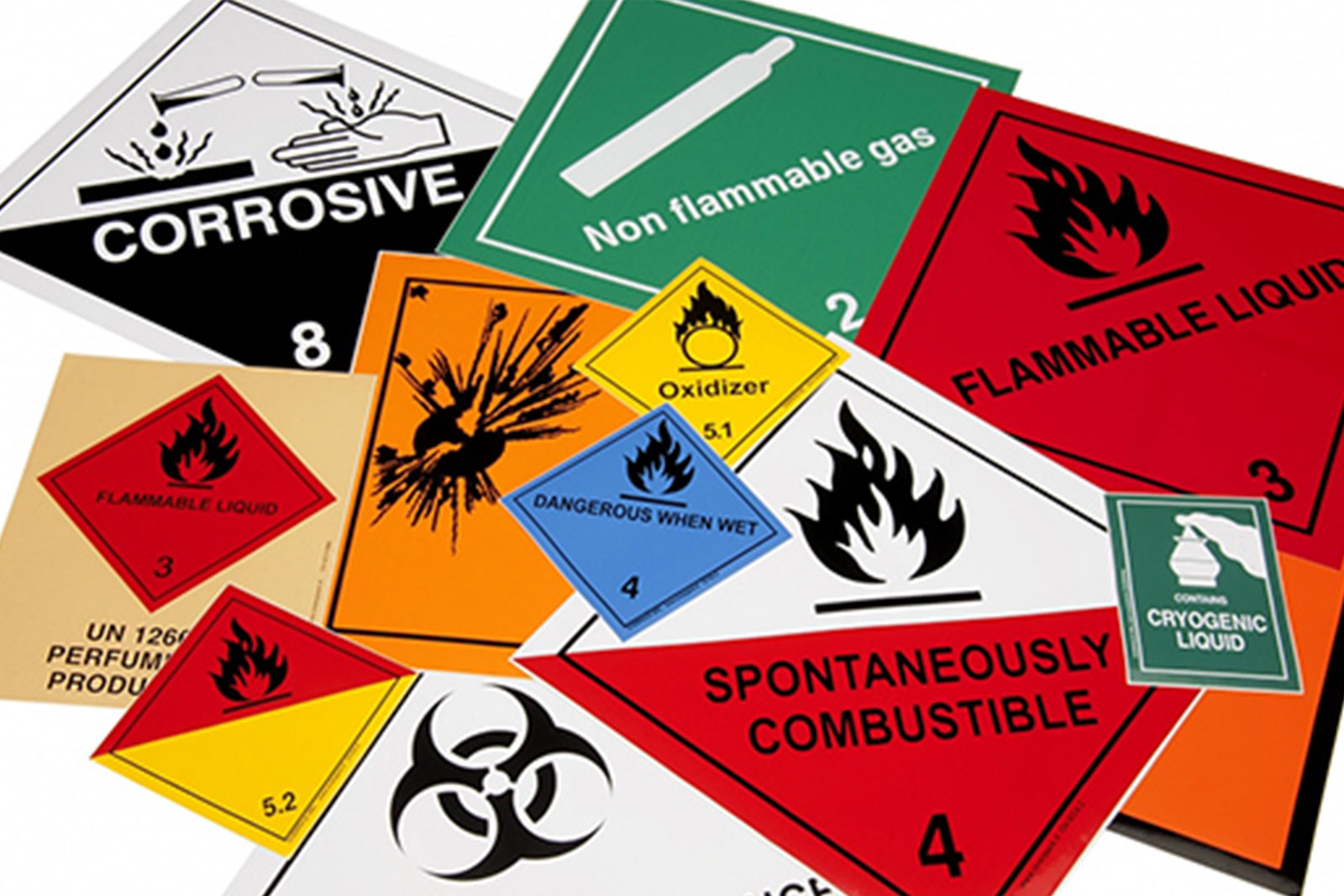
Take your child to the doctor if their blisters get infected or if your child becomes increasingly unwell.
Children are contagious until all the blisters have dried up. During this time, keep your child home from childcare or school. Try to keep them away from newborn babies and women who are pregnant, or who might be trying to get pregnant, as their unborn baby could be affected.
Psoriasis
Psoriasis is a long-term condition caused by an overactive immune system. It may develop as only a few dry, red, scaly patches (known as ‘plaques’) on the skin, or plaques that cover large areas of the body.
Psoriasis can come and go, or it can be a life-long condition. There is no cure, but it can usually be controlled with treatment. Psoriasis is not contagious, but severe psoriasis can be difficult to manage and is associated with other health problems such as Crohn’s disease, diabetes and heart disease.
If you think your child might have psoriasis, see your doctor. They may refer your child to a dermatologist who can help you manage the condition.
They may refer your child to a dermatologist who can help you manage the condition.
Common Pediatric Rashes – Johns Hopkins All Children’s Hospital
Rashes are a common reason for people to visit local emergency departments. Many of these can easily be treated at home while others can be suggestive of true emergencies. On this week’s On Call for All Kids, Joe Perno, M.D., pediatric emergency medicine physician and vice president of medical affairs at Johns Hopkins All Children’s Hospital, shares information for parents about dealing with a variety of rashes.What is eczema?
Eczema is a common pediatric rash that presents with very dry, itchy, scaly skin. It most commonly affects younger children although some people suffer their entire lives. It is believed to be triggered by an over-active immune system response. It is very common in people with allergies or asthma. There is no cure, but treatment is focused on moisturizing the dry skin with lotions and treating the itching with steroid creams or oral anti-histamines. Eczema is rarely an emergency; however, the skin can become infected with bacteria such as MRSA, which would then require prompt treatment.
Eczema is rarely an emergency; however, the skin can become infected with bacteria such as MRSA, which would then require prompt treatment.
What is contact dermatitis?
Contact dermatitis is a local reaction of the skin to a foreign substance. Good examples of this include poison ivy, reactions to perfume or lotions, laundry detergents, bubble baths, etc. The rash is usually localized to the area of contact with the substance. The skin may be red, blistering or even develop raised bumps or hives. Often the area is very itchy. Treatment consists of removing the offending agent and treating the itching with oral antihistamines such as Benadryl. The reaction can last days to weeks. Contact dermatitis can become an emergency if the itching becomes very severe or it is not resolving.
What causes hives and when is it an emergency?
Hives or urticaria is usually triggered by an allergic reaction to food, airborne allergens or even viral infections. Typically hives are raised, red blotchy areas that are extremely itchy. The hives may come and go and move around the body. The main treatment of hives is with oral antihistamines. Hives can become a significant emergency if they are associated with difficulty breathing or swallowing. If a patient is wheezing, short of breath, has swollen lips or cannot swallow, he or she should seek immediate medical attention either in an emergency department or via 911. In the emergency department, we have other treatments to reverse a severe allergic reaction. People with known severe allergies to food or insect bites should carry an Epi-pen, which is a device to deliver epinephrine, which immediately reverses a severe allergic reaction.
The hives may come and go and move around the body. The main treatment of hives is with oral antihistamines. Hives can become a significant emergency if they are associated with difficulty breathing or swallowing. If a patient is wheezing, short of breath, has swollen lips or cannot swallow, he or she should seek immediate medical attention either in an emergency department or via 911. In the emergency department, we have other treatments to reverse a severe allergic reaction. People with known severe allergies to food or insect bites should carry an Epi-pen, which is a device to deliver epinephrine, which immediately reverses a severe allergic reaction.
What are the common types of rashes we see?
Many viral illnesses can cause rashes; in particular the viruses that are most common in the summertime. Viral rashes usually consist of small red bumps scattered over the body. Typically, they are not itchy and do not bother the child. They often only bother the parents who are upset that the child is now covered in red spots. Some viruses cause rashes to develop after the fever has resolved (roseola) while others will be present while the child is ill. Viral rashes typically do not require any therapy. Chickenpox (varicella) can require more precautions and treatment, but it typically is rare with vaccination.
Some viruses cause rashes to develop after the fever has resolved (roseola) while others will be present while the child is ill. Viral rashes typically do not require any therapy. Chickenpox (varicella) can require more precautions and treatment, but it typically is rare with vaccination.
While rare, symptoms of multisystem inflammatory syndrome in children (MIS-C) related to COVID-19 has occurred in children. Call your family doctor or pediatrician right away if your child experiences a fever of 100.4 or more, lasting more than 24 hours, and at least one of these symptoms:
- Unusual weakness or fatigue
- A red rash
- Abdominal (belly) pain
- Vomiting and diarrhea
- Red, cracked lips
- Red eyes
- Swollen hands or feet
When is a rash dangerous and should parents rush to the Emergency Center?
Any rash that is associated with difficulty breathing or swallowing should be treated as an emergency. Certain rashes with fever can be dangerous. If the child has fever and a flat bright red rash that looks like someone made small dots with a red magic marker, the child should be seen immediately. Also, if the child has a purple, blotchy rash that almost looks like bruising the child should be seen right away. If the child develops a rash with significant peeling of the skin or involvement inside the mouth, nose or eyes, the child should also be seen immediately. Identifying rashes can be very difficult, so anytime the parent has any concerns, the child should be seen by a pediatrician or local emergency department.
If the child has fever and a flat bright red rash that looks like someone made small dots with a red magic marker, the child should be seen immediately. Also, if the child has a purple, blotchy rash that almost looks like bruising the child should be seen right away. If the child develops a rash with significant peeling of the skin or involvement inside the mouth, nose or eyes, the child should also be seen immediately. Identifying rashes can be very difficult, so anytime the parent has any concerns, the child should be seen by a pediatrician or local emergency department.
On Call for All Kids is a weekly series featuring Johns Hopkins All Children’s Hospital experts. Visit HopkinsAllChildrens.org/Stories each Monday for the latest report. Check out more advice from Joe Perno, M.D.
“,
“url” : “”,
“dateModified” : “11/30/2020 11:49:17 AM”,
“publisher” : {
“@type” : “Organization”,
“name” : “Johns Hopkins All Children’s Hospital”,
“logo” :
{
“@type” : “ImageObject”,
“url” : “https://www. hopkinsallchildrens.org/ACH/media/Emerge_ACH/Site%20Images/jhm-logo.png”
hopkinsallchildrens.org/ACH/media/Emerge_ACH/Site%20Images/jhm-logo.png”
}
},
“mainEntityOfPage”: {
“@type”: “WebPage”,
“@id”: “http://www.hopkinsallchildrens.org/”
}
}
Rashes are a common reason for people to visit local emergency departments. Many of these can easily be treated at home while others can be suggestive of true emergencies. On this week’s On Call for All Kids, Joe Perno, M.D., pediatric emergency medicine physician and vice president of medical affairs at Johns Hopkins All Children’s Hospital, shares information for parents about dealing with a variety of rashes.What is eczema?
Eczema is a common pediatric rash that presents with very dry, itchy, scaly skin. It most commonly affects younger children although some people suffer their entire lives. It is believed to be triggered by an over-active immune system response. It is very common in people with allergies or asthma. There is no cure, but treatment is focused on moisturizing the dry skin with lotions and treating the itching with steroid creams or oral anti-histamines. Eczema is rarely an emergency; however, the skin can become infected with bacteria such as MRSA, which would then require prompt treatment.
Eczema is rarely an emergency; however, the skin can become infected with bacteria such as MRSA, which would then require prompt treatment.
What is contact dermatitis?
Contact dermatitis is a local reaction of the skin to a foreign substance. Good examples of this include poison ivy, reactions to perfume or lotions, laundry detergents, bubble baths, etc. The rash is usually localized to the area of contact with the substance. The skin may be red, blistering or even develop raised bumps or hives. Often the area is very itchy. Treatment consists of removing the offending agent and treating the itching with oral antihistamines such as Benadryl. The reaction can last days to weeks. Contact dermatitis can become an emergency if the itching becomes very severe or it is not resolving.
What causes hives and when is it an emergency?
Hives or urticaria is usually triggered by an allergic reaction to food, airborne allergens or even viral infections. Typically hives are raised, red blotchy areas that are extremely itchy. The hives may come and go and move around the body. The main treatment of hives is with oral antihistamines. Hives can become a significant emergency if they are associated with difficulty breathing or swallowing. If a patient is wheezing, short of breath, has swollen lips or cannot swallow, he or she should seek immediate medical attention either in an emergency department or via 911. In the emergency department, we have other treatments to reverse a severe allergic reaction. People with known severe allergies to food or insect bites should carry an Epi-pen, which is a device to deliver epinephrine, which immediately reverses a severe allergic reaction.
The hives may come and go and move around the body. The main treatment of hives is with oral antihistamines. Hives can become a significant emergency if they are associated with difficulty breathing or swallowing. If a patient is wheezing, short of breath, has swollen lips or cannot swallow, he or she should seek immediate medical attention either in an emergency department or via 911. In the emergency department, we have other treatments to reverse a severe allergic reaction. People with known severe allergies to food or insect bites should carry an Epi-pen, which is a device to deliver epinephrine, which immediately reverses a severe allergic reaction.
What are the common types of rashes we see?
Many viral illnesses can cause rashes; in particular the viruses that are most common in the summertime. Viral rashes usually consist of small red bumps scattered over the body. Typically, they are not itchy and do not bother the child. They often only bother the parents who are upset that the child is now covered in red spots. Some viruses cause rashes to develop after the fever has resolved (roseola) while others will be present while the child is ill. Viral rashes typically do not require any therapy. Chickenpox (varicella) can require more precautions and treatment, but it typically is rare with vaccination.
Some viruses cause rashes to develop after the fever has resolved (roseola) while others will be present while the child is ill. Viral rashes typically do not require any therapy. Chickenpox (varicella) can require more precautions and treatment, but it typically is rare with vaccination.
While rare, symptoms of multisystem inflammatory syndrome in children (MIS-C) related to COVID-19 has occurred in children. Call your family doctor or pediatrician right away if your child experiences a fever of 100.4 or more, lasting more than 24 hours, and at least one of these symptoms:
- Unusual weakness or fatigue
- A red rash
- Abdominal (belly) pain
- Vomiting and diarrhea
- Red, cracked lips
- Red eyes
- Swollen hands or feet
When is a rash dangerous and should parents rush to the Emergency Center?
Any rash that is associated with difficulty breathing or swallowing should be treated as an emergency. Certain rashes with fever can be dangerous. If the child has fever and a flat bright red rash that looks like someone made small dots with a red magic marker, the child should be seen immediately. Also, if the child has a purple, blotchy rash that almost looks like bruising the child should be seen right away. If the child develops a rash with significant peeling of the skin or involvement inside the mouth, nose or eyes, the child should also be seen immediately. Identifying rashes can be very difficult, so anytime the parent has any concerns, the child should be seen by a pediatrician or local emergency department.
Certain rashes with fever can be dangerous. If the child has fever and a flat bright red rash that looks like someone made small dots with a red magic marker, the child should be seen immediately. Also, if the child has a purple, blotchy rash that almost looks like bruising the child should be seen right away. If the child develops a rash with significant peeling of the skin or involvement inside the mouth, nose or eyes, the child should also be seen immediately. Identifying rashes can be very difficult, so anytime the parent has any concerns, the child should be seen by a pediatrician or local emergency department.
On Call for All Kids is a weekly series featuring Johns Hopkins All Children’s Hospital experts. Visit HopkinsAllChildrens.org/Stories each Monday for the latest report. Check out more advice from Joe Perno, M.D.
Related Articles
How to Get a Toddler to Listen
Posted on Sep 27, 2021 in General News
As children reach preschool age, they are looking to gain more autonomy and find more times to express this need for independence. Pediatric psychologist Alyssa Fritz, Ph.D., talks about toddler listening abilities and shares tips for communicating with your child.
Pediatric psychologist Alyssa Fritz, Ph.D., talks about toddler listening abilities and shares tips for communicating with your child.
What Causes Nosebleeds in Kids?
Posted on Sep 20, 2021 in General News
Many children get nosebleeds, and may even get them frequently, especially younger children. Rachel Dawkins, M.D., talks about what can cause them and what to do when your child has a nosebleed.
More Articles
Rashes from amoxicillin: Is it a true allergy?
Image Source
I had the pleasure of evaluating a 1-year-old female for an amoxicillin allergy. Mother shared her daughter had a cold for a week, but seemed to be getting better. She then developed a fever of 102. She was seen by her pediatrician the next day and was diagnosed with her first ear infection and started on amoxicillin twice a day.
The patient was starting to get better, but then on the fifth day she woke up with a rash all over and her mother became concerned that her daughter was having an allergic reaction. Amoxicillin was stopped and her mother has been concerned about giving her the medication ever since.
Amoxicillin was stopped and her mother has been concerned about giving her the medication ever since.
About 5 to 10 percent of children taking amoxicillin or Augmentin will develop a skin rash at some point during the course of the medication. The majority of these reactions are non-allergic, and most are caused by viruses. So, how can you tell the difference?
A non-allergic rash occurring while taking amoxicillin or Augmentin will:
- Look like small (less than half an inch) widespread pink spots in a symmetrical pattern or slightly raised pink bumps
- Usually appear on day 5-7 from the start of the amoxicillin or Augmentin, but can occur at any time during the course of the medication
- It always appears on the chest, abdomen or back and usually involves the face, arms and legs – the rash may worsen before it gets better
- Differ from hives in appearance (hives are always raised, itchy and change location)
- Usually goes away in three days, but can last from one to six days
- It’s not contagious, so he/she can go back to school
Warning signs it is a true allergic reaction would be sudden onset of the rash within two hours of the first dose, any breathing or swallowing difficulty or very itchy hives.
Like the parent in the above scenario, even if you know it’s not an allergic reaction, it may still feel wrong to continue the medication or give it again in future. There are several reasons why it is better to continue using amoxicillin than stopping or changing to a different antibiotic:
- Changing to a broader-spectrum antibiotic may not be necessary and could cause other problems, such as diarrhea or vomiting.
- Stopping the medication can incorrectly label your child as allergic to the penicillin-family of antibiotics, which would limit future antibiotic choices.
If your child is on amoxicillin or Augmentin and develops a rash, always consult your pediatrician. If considered appropriate by your pediatrician, you can be evaluated by an allergist to assess if future avoidance is needed.
If you’re interested in finding your nearest Texas Children’s Pediatrics location, click here.
90,000 Coxsackie virus: epidemiology, clinic, prevention
Enterovirus infections are a large group of acute viral diseases caused by enteroviruses of the Coxsackie group and ECHO, characterized by a variety of clinical manifestations from mild febrile conditions to severe meningitis.
Enteroviruses are ubiquitous, resistant in the external environment and can persist for a long time in sewage, swimming pools, open water bodies, household items, food (milk, fruits, vegetables).The virus dies quickly when heated, boiled.
Possible ways of transmission of infection: fecal-oral (food and water), airborne droplets, contact-household (dirty hands, toys). Enterovirus infections are characterized by the rapid spread of the disease among humans.
The source of infection is sick people, including asymptomatic people, and virus carriers. The most intense viruses are secreted from humans in the first days of the disease, but their isolation is possible for up to several months.
Human susceptibility to the virus is high. Group diseases are often observed, family outbreaks are possible
The disease begins acutely, with a rise in body temperature to 39-40 degrees. There is a severe headache, dizziness, vomiting, sometimes pain in the abdomen, back, convulsive syndrome is possible in children, often severe catarrhal manifestations from the oropharynx, upper respiratory tract, painful skin rash. Serous viral meningitis is the most common and severe form of enterovirus infection.When these complaints appear, it is necessary to urgently isolate the patient, since he is a source of infection for others, and consult a doctor.
Serous viral meningitis is the most common and severe form of enterovirus infection.When these complaints appear, it is necessary to urgently isolate the patient, since he is a source of infection for others, and consult a doctor.
Despite the bright clinic and severity of manifestations, the course of enterovirus infection is favorable, complications are rare.
Personal prophylaxis measures should consist in observing the rules of personal hygiene, observing the drinking regime (boiled water, bottled water), thorough processing of consumed fruits, vegetables and subsequent rinsing with boiling water.We recommend wet cleaning of residential premises at least 2 times a day, airing the premises.
Under no circumstances should the child visit an organized children’s group with any manifestations of the disease.
At the first signs of illness, you must immediately seek medical help, do not self-medicate!
Symptoms similar to Kawasaki syndrome in children are associated with coronavirus
Photo author, PA Media
Dozens of British and American children have recently been affected by a rare inflammatory disease that doctors associate with coronavirus.
Serious complications have occurred in a small number of cases. Several children required resuscitation.
In Britain, approximately 100 children have experienced symptoms. Studies have shown similar reactions have occurred in continental Europe.
As doctors suggest, they are caused by a delayed immune response to the virus and resemble the symptoms of another long-known disease – Kawasaki syndrome.
Kawasaki disease (also called Kawasaki syndrome) is a rare disease named for the Japanese physician who first described it in 1967.It is characterized primarily by inflammation of the blood vessels, as well as rashes, tonsil swelling and dry lips, and affects almost exclusively children under the age of five.
In April, UK NHS doctors were advised to look at rare but dangerous child pain after they had been reported in eight minors in London. One 14-year-old teenager then passed away.
All of them were treated at the London children’s clinic “Evelina”, and all had the same symptoms: high fever, rash, redness of the eyes, swelling, aches throughout the body.:max_bytes(150000):strip_icc()/penicillin-allergies-2634584-01-8e7ad55b8d914e23a20b9597af84dc63.png)
Most of them did not have serious breathing problems, but seven doctors prescribed mechanical ventilation to facilitate heart and blood circulation.
Post-Infectious Syndrome
Doctors call this a new phenomenon similar to Kawasaki disease. However, unlike the latter, it affects not only preschoolers, but also adolescents under the age of 16, and in some cases causes severe complications.
According to Liz Whittaker, a medical practitioner and lecturer in childhood infectious diseases and immunology at Imperial College London, the fact that the syndrome manifested itself in the midst of the coronavirus pandemic likely indicates a link between the two.
“We are passing the peak of Covid-19, and after three or four weeks we observe the peak of a new disease. This makes us think that we are dealing with a post-infectious syndrome, probably associated with the accumulation of antibodies in the body,” the expert said.
Professor Russell Wiener, President of the Royal College of Pediatrics and Child Health, points out that most children who develop these symptoms respond well to treatment and begin to go home.
The syndrome is still extremely rare and should not stop parents releasing children from quarantine, the scientist added.
According to Professor Wiener, the study of this syndrome will help explain why some children are difficult to tolerate Covid-19, while the majority do not become infected or are asymptomatic. 90,003 90,030 Children account for 1 to 2% of coronavirus cases in Britain, and less than 500 of them required hospitalization.
Scientists have named rare symptoms of COVID-19 requiring a doctor’s call
Symptoms of COVID-19 – in addition to the well-known ones – can be confusion, a heavy lifting in the morning or blue lips, the British Center for Disease Control and Prevention said.In addition, scientists from King’s College London have called loss of appetite, rash and delirium subtle signs of infection with the new coronavirus infection.
The British Center for Disease Control and Prevention (CDC) has published five new symptoms warning of the possibility of COVID-19 infection, writes the Daily Express.
These signs include: shortness of breath, persistent pain or pressure in the chest, confusion, a heavy lifting in the morning, blue lips or face completely.
“Not all possible symptoms are listed on this list. Please call your doctor if you develop other serious or dangerous symptoms, ”advised the CDC.
The main signs of a new type of coronavirus are high fever, severe cough for an hour or longer, or three or more attacks of coughing during the day, loss, as well as weakening of smell or taste (if a person does not smell or taste, or smell and taste things are different from the usual).
According to the latest study by the Center for Mathematical Modeling of Infectious Diseases of the London School of Hygiene and Tropical Medicine, a new variant of the coronavirus, called VOC-202012/01, is 56% more virulent than other strains, and this explains a new surge in the incidence in Europe.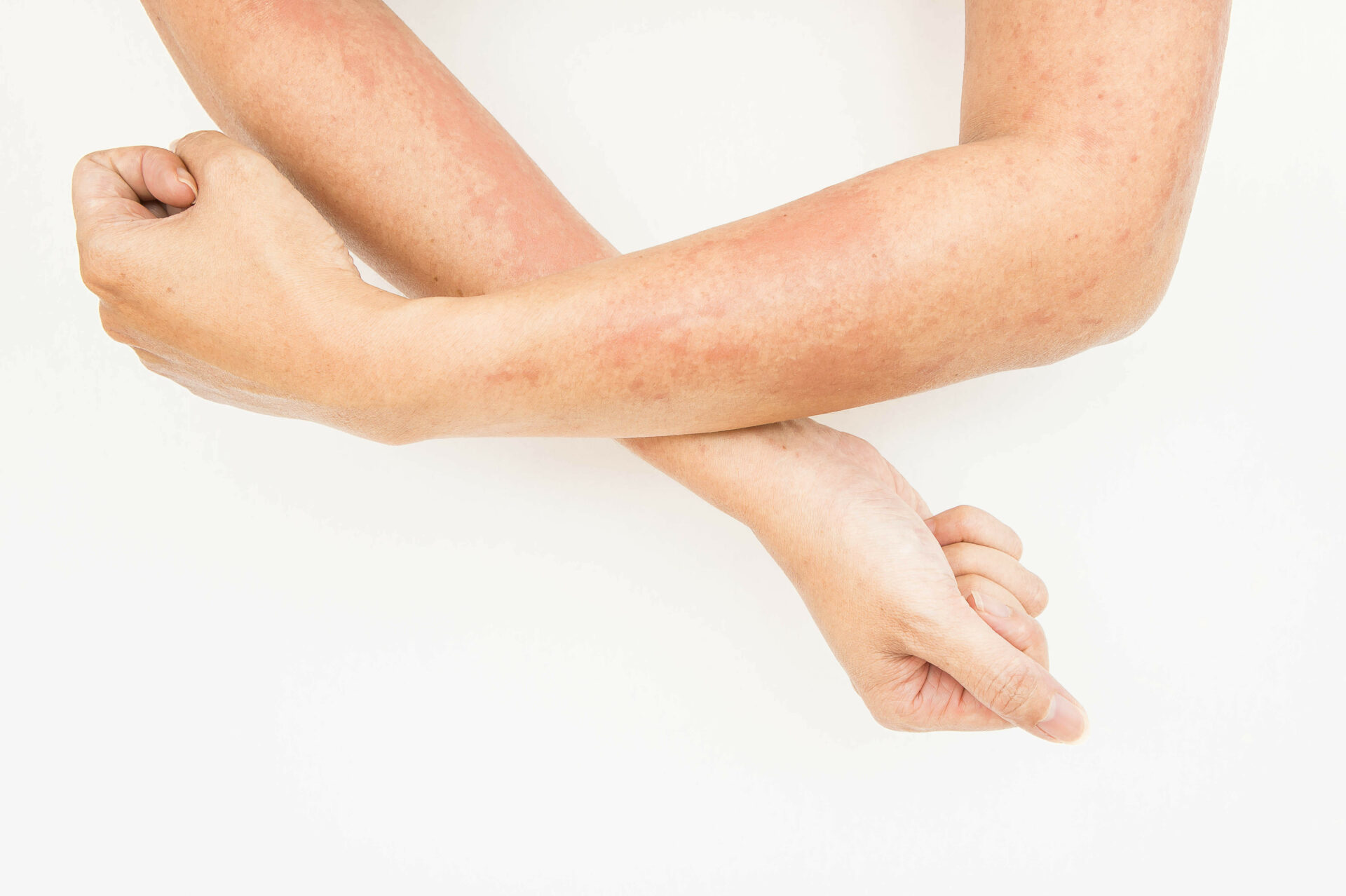
According to Public Health England, the ways to combat this virus are the same regardless of variant. It will not spread if you avoid close contact with others, wash your hands, wear masks, and reduce social contact.
“We do not currently have evidence that this option causes more severe disease or increased mortality, but we are continuing research to better understand this,” says PHE.
Scientists from King’s College London have named non-obvious signs of infection with a new coronavirus infection, which users of the COVID Symptom Study application complain about.
The published list includes headache and weakness, which are the rarest signs of illness.In addition, the list included sore throat, loss of appetite, difficulty breathing, rash and delirium. In some cases, the coronavirus only manifests itself in the last two symptoms.
On December 14, the head of the British Ministry of Health Matt Hancock said that British scientists have identified a new, mutated type of coronavirus that spreads faster than known strains. Due to the tense epidemiological situation, from December 20 in the southeast of the UK and in London, the maximum fourth level of restrictions began to operate.It provides for the closure of all stores, except for those selling essential goods, as well as gyms, hairdressers and other establishments.
Due to the tense epidemiological situation, from December 20 in the southeast of the UK and in London, the maximum fourth level of restrictions began to operate.It provides for the closure of all stores, except for those selling essential goods, as well as gyms, hairdressers and other establishments.
People are advised not to leave their homes. A number of countries have suspended transport links with Great Britain, the list of these countries is constantly growing.
A new variant of the coronavirus has already spread to eight European countries, Hans Kluge, Regional Director for Europe at the World Health Organization, said on Twitter.
According to him, in this regard, it is vitally important for all countries to strengthen existing protective measures: to maintain social distance, wear masks and comply with other prescriptions of specialists.
“This variant [of the virus], unlike previous strains, appears to be spreading among younger age groups. It is important to be vigilant now – while research continues [to] determine its impact, ”he added.
British Prime Minister Boris Johnson said at a press conference in Downing Street that he did not rule out repeated national isolation.
He explained that the kingdom is facing “significant new pressure” from the mutated strain.
“Obviously we are facing a very serious new strain, especially given the rate at which it is spreading … I really think we need to intercept this virus now to stop it from spiraling out of control in January. We need to gain time to vaccinate as many elderly and most vulnerable people as possible, ”the politician said.
VOC-202012/01 was also found in Spain, France, Germany and Sweden.
90,000 Childhood infections – chickenpox, mumps, rubella, whooping cough, scarlet fever and measles
Childhood infections: whooping cough, scarlet fever, measles, chickenpox, rubella and mumps
There are a number of infectious diseases that are commonly called children, because they are sick mainly in childhood. As a rule, a child gets sick with childhood infections only once, then he develops strong immunity for life.Infections in childhood include measles, rubella, scarlet fever, chickenpox (chickenpox), mumps (mumps), and whooping cough.
As a rule, a child gets sick with childhood infections only once, then he develops strong immunity for life.Infections in childhood include measles, rubella, scarlet fever, chickenpox (chickenpox), mumps (mumps), and whooping cough.
Symptoms and treatment of chickenpox in children (chickenpox)
If, after a short increase in body temperature, a runny nose and redness of the eyes / throat, rashes appear on the child’s body, then any mother will understand that it is chickenpox. Symptoms and treatment of chickenpox in children should be known to all parents, because it is important not only to diagnose the infection in time, but also to carry out competent treatment.
The first sign of chickenpox is a characteristic rash – small, reddish-pink nodules with jagged edges that most often appear on the face and upper extremities. After a few hours, a small bubble forms on the surface of the nodule, which is filled with a translucent yellowish liquid. After 8-12 hours, the bubbles open up on their own, the rash becomes covered with a dense crust, which gradually disappears.
The incubation period of chickenpox is 3-5 days, at this stage it is not possible to identify the disease.When the first symptoms of chickenpox appear, parents should consult a doctor (call him at home), but no specific treatment will be prescribed. With chickenpox, it is recommended to carry out symptomatic therapy – for example, the child may need antipyretics, drugs that relieve itching of the skin. It is extremely rare that doctors prescribe Cycloferon, which is able to prevent the development of a purulent bacterial infection against the background of chickenpox, which greatly facilitates the course of the disease.
Chickenpox infection in kindergarten implies its quarantine.
Symptoms and treatment of scarlet fever in children
Scarlet fever is an acute infectious disease characterized by intoxication, fever and profuse punctate rash. The source of infection is a sick child, or a healthy carrier of streptococci – it is this pathogenic microorganism that provokes the development of scarlet fever.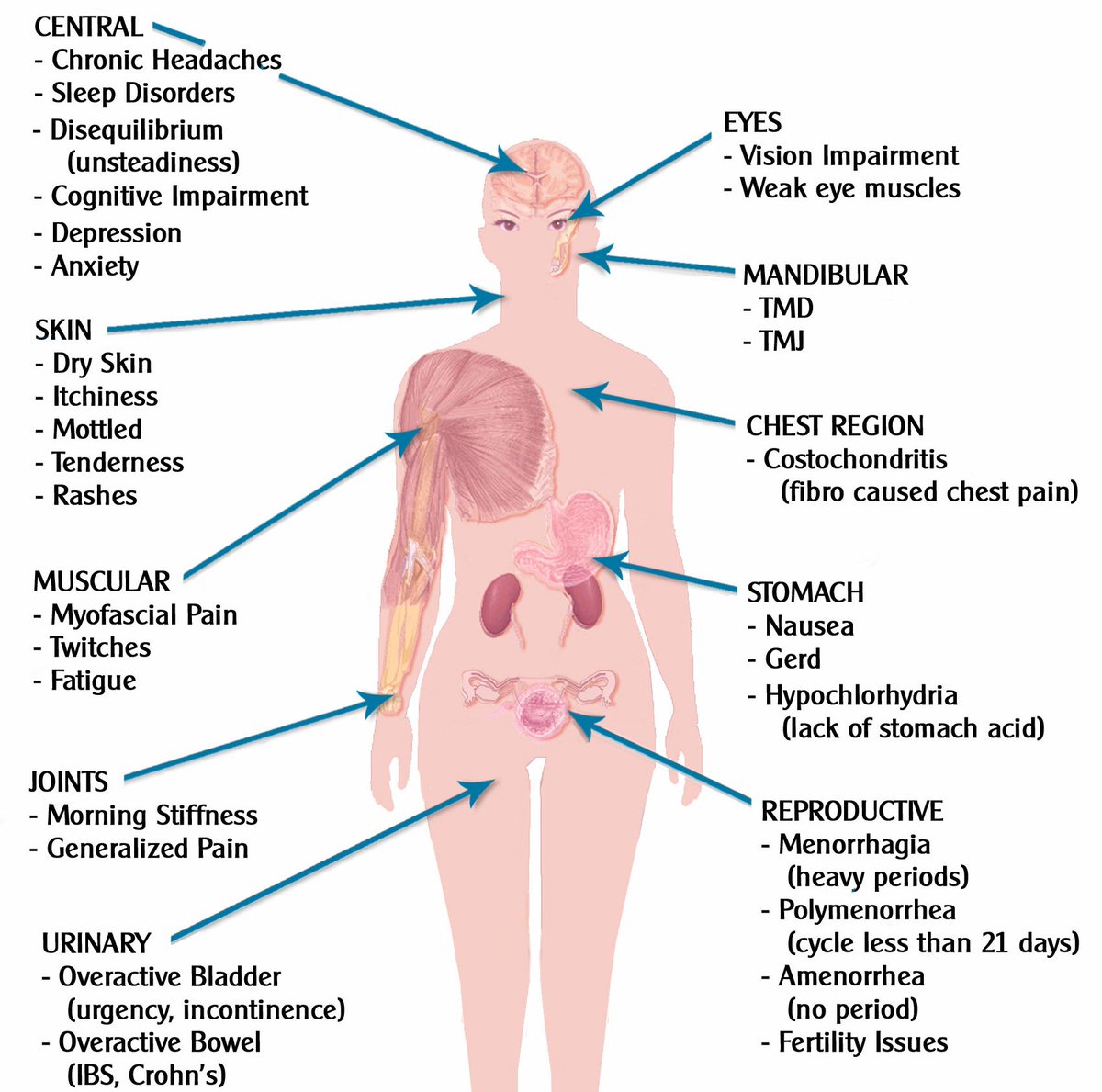
Symptoms and treatment of scarlet fever in children are well known to doctors, so there will be no problems with diagnosis. This disease always begins acutely, with a sharp rise in temperature, up to 39 degrees.The child complains of headache and nausea, pain when swallowing. Already at the end of the first day of the disease, a small and itchy rash appears, which rapidly covers the entire body. To the touch, the skin becomes excessively dry, resembling sandpaper.
Treatment of scarlet fever is carried out at home, only in case of a severe course of the disease, the child can be placed in a hospital. To suppress streptococcus, antibiotic therapy is prescribed, the throat must be rinsed with a solution of furacilin or infusions of chamomile / calendula.Without fail, antihistamines and vitamins are prescribed as part of the treatment of scarlet fever.
Symptoms and treatment of pertussis in children
Whooping cough is most common in children under 5 years of age who have not been vaccinated. It is believed that whooping cough is the most dangerous for children in the first year of life; at an older age, the disease is easier.
It is believed that whooping cough is the most dangerous for children in the first year of life; at an older age, the disease is easier.
All parents need to know the symptoms and treatment of whooping cough in children, because this disease is infectious and a sick child can infect all surrounding children.As a rule, the disease begins with a slight fever, general weakness, and a slight cough. Then, after a few days, the child begins to worry about a specific cough with tears and spasms, hearing which, the pediatrician will immediately suspect whooping cough. It is noteworthy that before the onset of this whooping cough, parents consider their child to be healthy, but slightly cold – he may even attend preschool, which leads to the spread of infection.
Treatment is prescribed by a doctor, having previously made an analysis for whooping cough – a bacterial culture on biomaterial from the throat of a sick child.This, firstly, makes it possible to clarify the diagnosis, and secondly, it helps to identify the true causative agent of the infection and choose a competent / effective treatment.
As a rule, treatment is carried out with antibacterial drugs, antihistamines and antitussives are also prescribed.
Mumps, measles and rubella
These diseases are also considered infectious and dangerous. For example, the symptoms of mumps in children will be as follows:
- temperature rise to 40 degrees
- ear pain
- increased salivation
- pain when chewing and swallowing
- Swelling of the cheek on the side of the affected parotid gland.
Extremely rare, but the virus may damage the meninges (meningitis will develop), kidneys, pancreas (pancreatitis progresses). In boys, mumps most often causes infertility, although there are exceptions.
Among childhood infections, there are two diseases that have a similar symptom – a rash with measles and rubella looks like an accumulation of semolina grains. Redness of the skin at the sites of the rash will be characteristic of both measles and rubella. It is considered an excellent sign if a girl had rubella in childhood – rubella antibodies are produced in the body for life, and this infectious disease is not threatened during pregnancy. If a woman has suffered rubella during pregnancy, then this is fraught with miscarriage, fetal death or the birth of a child with gross developmental disabilities. A woman at the planning stage of pregnancy can be vaccinated against rubella, which will protect her and her unborn baby from problems in the future.
It is considered an excellent sign if a girl had rubella in childhood – rubella antibodies are produced in the body for life, and this infectious disease is not threatened during pregnancy. If a woman has suffered rubella during pregnancy, then this is fraught with miscarriage, fetal death or the birth of a child with gross developmental disabilities. A woman at the planning stage of pregnancy can be vaccinated against rubella, which will protect her and her unborn baby from problems in the future.
Prevention of childhood infections
Let’s make a reservation right away that prevention is vaccination of a child.Chickenpox, measles, rubella and scarlet fever can be prevented. Such a specific vaccination is well tolerated by children, it is extremely rare that after the introduction of the vaccine, the baby’s body temperature may rise. Many parents refuse vaccinations, but prevention of rubella and scarlet fever is simply impossible in another way, and the consequences of infectious diseases that have been transferred can be really terrible, up to complete disability.
For more information about how the vaccination against measles, rubella, mumps is tolerated, when a child should be vaccinated and what to do with an existing disease, you can find out on our website Dobrobut.com.
Related services:
Pediatrician consultation
Chickenpox (Chickenpox): Classification of chickenpox by the nature of the rash, Causes, Symptoms
Classification of chickenpox by the nature of the rash
- Typical;
- Atypical:
- pustular;
- rudimentary;
- bullous;
- gangrenous;
- generalized;
- hemorrhagic.
Reasons
The varicella-zoster virus infects exclusively human cells, so only humans can be the only carrier of the virus. This viral disease has its own characteristics. In particular, DNA is present in its virus, it is sensitive to the effects of ultraviolet radiation, and it is also easy for it to survive in those conditions when the temperature of the environment in which it is located is quite low. Therefore, reusable thawing and freezing processes do not affect it in any way.
The virus has an airborne transmission route, that is, it spreads from the patient while he talks, coughs, sneezes, kisses, etc. Patients with chickenpox can infect other people about 20-24 hours before the onset of the rash and until the 5th day when the last rash was recorded. The varicella-zoster virus quickly dies in the external environment – under the influence of sunlight and ultraviolet radiation. Outdoors, the virus lives for about 10 minutes.
How long does chickenpox remain contagious
The number of days that you can get chickenpox – affects not only the degree of infection of the carrier of the infection itself, but also the immunity of the potentially infected, with weak immunity, you can pick up almost absent particles of the remnants of the infection, with strong immunity, it is possible to overcome a small attack of the virus.Also, with a high degree of immunity protection in a sick person, the disease will leave him sooner, as well as the period of spread will decrease significantly.
On average, and according to the results of laboratory studies, it was decided that, on average, chickenpox remains contagious for about 10-12 days, from the day the virus enters the body. However, it should be remembered that the safety measures associated with protecting against infection are never superfluous. The incubation period, according to scientific medicine, is from 10 to 21 days, from the day of infection, infectious chickenpox remains after about 5 days, after the appearance of the very last ulcer and covering it with a crust.
The contagiousness of chickenpox exceeds many other infectious diseases. At the same time, it is possible to become infected only with very close contact, by airborne droplets, it is impossible to allow the patient to cough or sneeze in the presence of a person who has not yet had chickenpox.
Symptoms
Chickenpox occurs in 4 periods: incubation, prodromal, rash and crusts.
The incubation period of chickenpox lasts: from 13 to 17 days for patients under the age of 30, and from 11 to 21 days – from 30 years.
The incubation period itself can have a different degree of duration, depending on the preparedness of the organism to fight infection, of a particular organism. The time and severity of the disease, as well as the period of infectiousness, are also different.
The prodromal period occurs about a day before the rash: fever, pain in the lumbar spine, headaches appear. In children, the prodromal period is most often absent, and the disease is expressed by the appearance of a rash.
How does chickenpox start and what are its first signs?
Rashes in most children proceed without any disturbances in the general condition, the manifestations of fever coincide with the appearance of the rash, since the rash appears in waves, in several stages.In adults, the rash is often massive, at the same time the temperature rises, and severe itching appears.
Initially, the rash appears in the form of small spots, which literally in a few hours transform into a bubble (vesicle) with redness around. After two to three days, the vesicle bursts and dries up, and gradually becomes covered with a dense crust.
Considering that rashes appear at intervals of one or two days, a rash can be observed on the skin at the same time in different stages of development (spot, nodule, vesicle, crust).
There are various forms of this disease. Chickenpox can be typical or atypical in shape. The typical form of chickenpox is also divided into several types, such as mild, moderate and severe disease.
When a person has a mild form of chickenpox, in general he does not feel so bad. His body temperature does not exceed 38 °. A relatively small amount of rash is observed on the skin, and a very small amount of rash is present on the mucous membranes.The rash occurs in as little as 2 to 4 days.
If the patient has a moderate form of this infectious disease, then he has a slight intoxication in his body. The onset of chickenpox is also characterized by an increased temperature, but there are much more rashes on the body than in the first case. They occur over a longer period of time, approximately 4 to 5 days. Also, the rash is itchy. When the bubbles on the skin begin to dry out, the patient’s general condition becomes more satisfactory, and his body temperature also returns to normal.
In the event that the patient has a severe form of chickenpox, the rash is present in abundance, and not only on the skin, but also on the mucous membranes of the eyes, mouth, nose and genitals. The rash will appear on the patient’s body within a week, or even more. The temperature will be high enough. The patient’s state of health will be so bad that he may experience such negative reactions of the body as vomiting, sleep problems and lack of appetite.
Atypical forms of such an infectious disease as chickenpox can be of several types.These are rudimentary forms, as well as forms with non-standard symptoms and complications.
Most often, the rudimentary form of chickenpox occurs in children when they are only a few months old. It is characterized by the fact that they have a rash of an insignificant volume on their skin. At the same time, chickenpox in this form practically in no way affects the deterioration of the child’s well-being. The temperature may not rise above normal.
Forms of the disease with severe symptoms, that is, aggravated, are observed rather infrequently.Usually those children who are weakened and have altered immunity are susceptible to them. For example, these may be children who have leukemia, or who have been treated with steroid hormones for a long period of time. This chickenpox can end fatally.
Another form of atypical chickenpox is generalized. She is accompanied by fever and an increased degree of intoxication, a large amount of rash, which is located not only on the skin and mucous membranes, but also on internal organs.
If a patient has a hemorrhagic form, hemorrhages begin in the skin and mucous membranes, there are frequent cases of nosebleeds, as well as hemorrhages in internal organs.
Gangrenous form means the presence of such a symptom as the appearance of dry gangrene simultaneously with the appearance of rashes, after which a deep ulcer remains.
Diagnostics
Diagnosis of chickenpox most often does not present any difficulties. The diagnosis is established by a doctor or pediatrician (for children) on the basis of clinical manifestations and analyzes, taking into account the epidemiology.
Chickenpox treatment
During the entire febrile period, bed rest is mandatory. In the treatment of chickenpox, antipyretic drugs are prescribed, detoxification therapy, if itching is present, antihistamines are indicated.
The sites of chickenpox infection are treated with a disinfectant solution. If abscesses appear, antibiotics are prescribed. In order to accelerate the falling off of the crusts, ultraviolet irradiation is indicated.
A specific method of preventing chickenpox is vaccination, which provides persistent immunity to the disease for many years.
You can find up-to-date data on the availability of medicines and prices for medicines in pharmacies in Ukraine on our service.
What does chickenpox look like in children during recovery
When it’s time to heal, the rash begins to crust over and fall off without help. This situation speaks of proper treatment, usually after the crusts fall off, not a trace of the disease remains on the body.
Chickenpox is usually treated on an outpatient basis. It should be ensured that the child does not scratch the spots, try to distract him from this in every possible way, small children can wear special soft gloves on their hands. If the rash begins to fester, which usually happens when scratching, then your doctor will prescribe antibiotics. It is imperative to provide the child with rest and bed rest. During illness, the baby should not be washed, as this can complicate the course of the disease, bed linen should be changed as often as possible.Bathing can be carried out only in a bath with potassium permanganate for several minutes, you can also take a shower, but for a short time. A large amount of liquid will help in the treatment.
If the child’s body temperature is more than 38 degrees, antipyretic drugs based on paracetamol should be given. Antihistamines can help reduce itching. To disinfect the rash, the bubbles can be cauterized with brilliant green, in the same way you can calculate the new spots that have appeared.
Complications of chickenpox
Quite rarely, in about 5% of cases, complications are observed after chickenpox.As a rule, the disease is severe in adults with primary infection, in people with weakened immune systems, and in infants. The most common complication is various skin infections – they develop if the wounds were nevertheless combed and bacteria penetrated into them, and can be quite serious and require long-term treatment. Pneumonia, transient arthritis, hepatitis, and encephalitis may develop. The latter is one of the most dangerous complications – inflammation of the brain, or encephalitis, can be caused by the addition of a bacterial infection, or by the entry of a virus into the central nervous system.In the future, encephalitis can cause paralysis, visual and sensory impairments, and some other neurological disorders.
Chickenpox has a small danger for pregnant women – the risk of complications is quite small when infected up to 20 weeks, after which there is practically no risk for the child. However, if the infection occurs in the last week before childbirth, there is a risk of congenital chickenpox of the child, which is always quite severe.
Prevention of chickenpox
Chickenpox prophylaxis, however, is still a controversial medical issue.Some doctors do not consider it necessary, but it is still better to be prepared and know how to protect yourself from chickenpox.
The only way that helps protect yourself from chickenpox, and that works 100%, is complete isolation from the source of the disease. However, this is practically impossible, because the patient is contagious already at the moment when no external manifestations can be noticed; but it must be remembered that from the moment the crusts dry, the risk of infection is reduced to zero.
In the event that there is a patient in the family, it is necessary not to forget that the disease is easily transmitted by airborne droplets, which means that even in the absence of direct contact, you can become infected.Gauze masks and respirators can reduce the risk. The patient should be in a separate room, all hygiene products, as well as cups, plates and other utensils should be individual. It is possible to use a quartz home lamp, but the instructions must be followed carefully.
Due to the fact that children of primary school age carry the disease quite easily, parents sometimes try to provoke contact between their child and the sick.
Since the seventies of the last century, the chickenpox vaccine has been successfully and very effectively used – now the main prevention of chickenpox in children and adults is precisely this.Vaccination is especially recommended for pregnant women, patients after chemotherapy and people with weakened immune systems. Vaccination can also be done in the first three days after contact with the patient. In the event that an adult does not remember whether he had chickenpox, and there is no way to find out, it is better to play it safe and also get vaccinated.
No matter how frivolous disease may seem chickenpox, prevention must be carried out. It is worth remembering that the main prevention of chickenpox in adults and children is maintaining a healthy lifestyle.A proper balanced diet, regular exercise and the absence of bad habits will help maintain the immune system in order, because it is she who is responsible for how susceptible our body is to viruses and infections.
Can you get chickenpox again?
“Lifetime immunity” after a disease is due to the fact that the virus itself Varicella zoster – forever remains in the body in an amount not sufficient to cause an infection, or infect people around, but it is his presence that makes the body produce antibodies on a constant basis , in the fight against chickenpox, that is why it is believed that the body of a person who has already been ill once has antibodies always ready to fight, which means it is untouchable for this virus.There is an assumption that it is these particles of the remains of the virus that can serve the development of an infection such as shingles (which is considered to be the second chickenpox), this assumption was put forward due to the fact that, at their core, these two infections have the same virus Varicella zoster and can be related to one another, in addition, a person suffering from shingles can infect another person with chickenpox, which proves the close relationship of these two infectious diseases.Shingles, unlike chickenpox itself, tends to appear many times, from two, three or more times, it can even acquire a chronic form, with improper treatment and neglect of safety measures.
There is an opinion that chickenpox is a “childhood” disease, but shingles is a problem for the older generation, but this opinion is erroneous. Both diseases can overtake absolutely at any age. The disease is considered a childhood disease, since this infection constantly walks around various institutions intended for children, and in addition, it is even useful to transfer chickenpox in childhood, since a “lifelong” immunity to this kind of virus appears, at a more mature age – undoubtedly, there are cases of diseases, but they are much more difficult to carry and have more consequences for the general condition of the body, as well as its appearance.Of course, if we consider separately the cases of shingles, older people are more likely to get sick, but the disease is much more difficult to carry than chickenpox, in any of the age periods.
It should be noted that cases of re-infection with chickenpox in the same form as it was originally – are found in medical practice. Such re-infections are more likely to be called the exceptions than the rule. However, a person who has once been ill in childhood can still be re-infected.All the symptoms, as well as the number of days of the incubation period and the features of the course of the disease, will coincide, however, in most cases, the infection proceeds in a milder and weaker form, and does not carry serious consequences, and even more so complications.
Chickenpox during pregnancy
Cases of morbidity during pregnancy are quite rare: 0.005-0.007 as a percentage. Fertilized women get sick no more often and no more severely than non-pregnant adults, however, with a complication of pneumonia (9-22%), mortality can reach 14-30-42%.
In the event that a woman contracted chickenpox while in a state of pregnancy, it is necessary to know about the consequences. The virus enters the fetus through the placenta. How dangerous it is for a child depends on the period at which the disease overtook:
First weeks – high probability of miscarriage. Just at this time, all important organs begin to form, and any disease can harm. The virus affects the development of the cerebral cortex, can provoke cataracts, and there is also the likelihood of developing limb hypoplasia.The chance of underdevelopment in the fetus is about 2 percent.
In general, the second trimester can be characterized by the fact that the risk for the woman and the fetus is quite high, but slightly decreases, relative to the first trimester (1.5 percent), the child may get congenital chickenpox syndrome.
If the disease has overtaken in the period from the thirteenth to the twentieth week – the possibility of getting a child with this congenital chickenpox syndrome – increases to 3-5 percent. In more detail about this syndrome: there are congenital defects in the newborn, such as scarred skin, deformity of the limbs, a reduced head relative to the norm, and congenital visual defects.The incomplete development of unhappy children entails lifelong consequences, in the future, the kids suffer from seizures, receive the makings of all kinds of mental and physical abnormalities at different stages of development. In the second trimester of pregnancy, the death of the embryo in the womb, as well as miscarriage, is still not excluded.
After 20 weeks, chickenpox does not have such a terrible effect on the fetus. Nevertheless, it is necessary to control the course of the process – a specialist, namely a doctor. If a woman gets chickenpox at the beginning of the third trimester, it is more likely that the child will not receive any consequences.After about five days from the moment of infection, the body begins to produce antibodies to viral particles, and also encloses the fetus with them through the placenta, which preserves the safe development of the child (since the fetus itself does not have a sufficiently developed immunity to protect itself on its own).
The most risky period during fruiting for chickenpox is the last five days before the onset of labor and the first couple of days after the birth of the baby. Since in this case, the newborn is exposed to viral introduction, however, it does not have enough time to receive and protect itself with maternal T-lymphocytes (antibodies to fight the virus).In the last week before childbirth, chickenpox becomes the most dangerous for the health and safety of the child, since the newborn gets the disease, which is a huge risk.
According to statistics, in 30 cases out of a hundred, a child gets neonatal chickenpox, which is dangerous for the health of the newborn and even his life, if the disease is not cured in time. This infection is fatal. For pregnant women with chickenpox, in addition to the danger to the fetus, there are also not happy prospects for herself, against the background of chickenpox pneumonia can form, not quite comforting statistics, in 15 cases out of a hundred – the disease gives the development of pneumonia, which poses a terrible threat to the female body (up to death before, after, and also probably during childbirth).We do not disregard the risk – pre-term childbirth. A significant tendency to easily get pneumonia in this state – falls in the third trimester of bearing the fetus. Of course, smokers are more likely to get complications than non-smoking expectant mothers.
Treatment of chickenpox in pregnant women
As soon as you notice the first signs of chickenpox, see your doctor immediately. If you do not want to get complications – do not try to allow yourself to self-medicate!
Pulmonary and extrapulmonary tuberculosis – Ravijuhend
This patient guide is based on the 2017 Estonian treatment guide “Management of patients with pulmonary and extrapulmonary tuberculosis” and the topics presented therein together with recommendations.In this manual, you will find the recommendations that are most important from the patient’s point of view. The guide provides an overview of the main problems associated with the disease.
The manual is intended for people with tuberculosis, as well as for their loved ones and health care workers. This guide will help patients and their loved ones cope better with their illness, provide answers to the most frequently asked questions about treatment and daily problems, and can support patients and their loved ones during the treatment process.The Patient Guide provides an overview of tuberculosis as a disease, the tests used for diagnosis, treatment, and the organization of a daily regimen during a controlled treatment process.
The guidelines were compiled by experts in the field, along with former patients who had previously experienced and recovered from tuberculosis. The importance of the topics described in the manual and the clarity of the text were appreciated by patients with TB and their loved ones. Patient feedback and feedback has been instrumental in the development of this manual and has helped to improve it.
You can learn more about the topics covered in this patient guide by following the links at the end of the guide.
|
Tuberculosis is an infectious disease that occurs due to a bacterium called Mycobacterium tuberculosis .The causative agents of tuberculosis are spread by airborne droplets. When a tuberculosis patient coughs, sneezes, singing or talking, together with droplets of saliva, tuberculosis pathogens are thrown into the air, which can be inhaled by other people nearby. As a result, a person can become infected with tuberculosis. One untreated TB patient can infect up to 10-15 people a year.
Not all people who have come into contact with an infectious (i.e. contagious) TB patient can develop TB.The more tuberculosis pathogens are thrown into the air by the carrier of the disease and the denser and longer contact with him, the more the likelihood of the spread of tuberculosis increases. Of all those who have close contact with an infectious TB patient (family members, friends and colleagues who are with the patient every day), approximately one third will become infected. It is impossible to get sick with TB, for example, by shaking hands, using the same dishes or the same toilet room.
Tuberculosis can damage all organs of a person, but most often the lungs are the focus of the disease.Of other organs, the disease can most often affect the pleura of the lungs, bones and joints, as well as the kidneys. This form of tuberculosis, in which the lungs themselves are not damaged, is called extrapulmonary tuberculosis, and patients with this disease are usually not contagious. At the same time, in the case of patients with extrapulmonary tuberculosis, it is very important to adhere to the prescribed course of treatment and bring treatment to the end.
All people can become infected with TB, regardless of their financial income or social status.Thus, the assumption that TB only affects people with a low standard of living is incorrect.
In 2016, 190 patients were diagnosed with TB in Estonia, of which 166 contracted TB for the first time. In 31 patients, tuberculosis was found not only in the lungs, but also in other organs. Extrapulmonary tuberculosis alone was diagnosed in 15 patients in 2016. Children rarely get sick in Estonia; up to 10 cases of the disease are diagnosed a year.
|
In case of infection (infection) with tuberculosis, viable but inactive tuberculosis bacteria enter the human body. In most cases, the body’s protective immune system is able to prevent the spread of bacteria in the body. People who become infected with tuberculosis feel healthy, have no symptoms of the disease, and do not spread tuberculosis to others.Infection with tuberculosis can be diagnosed with a blood test (determination of the level of interferon gamma of the causative agent of tuberculosis M. tuberculosis in the blood) or with a tuberculin test (tuberculin test).
The risk of contracting tuberculosis after infection is approximately 5–15%. The risk of getting sick is highest precisely within two years after infection, but you can get sick many years later if, for any reason, the person’s immune system weakened and can no longer keep the multiplication of tuberculosis bacteria.Therefore, it is very important that people who have become infected with tuberculosis know how to track their symptoms, which are characteristic of tuberculosis, and if they are found, they immediately go to a doctor.
In some cases, a person who has contracted tuberculosis is prescribed prophylactic treatment in order to prevent the further process of becoming ill with tuberculosis. Preventive treatment most often involves one anti-TB drug and treatment lasts six to nine months.
Tuberculosis can be contracted both immediately after infection and several years later.In a disease, the general condition of the human body plays an important role – malnutrition, mental stress, alcoholism, drug addiction, chronic diseases, and immune deficiency (including HIV infection) contribute to the disease. If the immune system of a person infected with tuberculosis is significantly weakened (for example, due to infection with HIV or another disease), then viable tuberculosis bacteria in the body will begin to multiply and become the cause of tuberculosis. In the case of tuberculosis, the person develops characteristic symptoms and the person can spread the tuberculosis bacteria to others. The risk of contracting tuberculosis after infection is higher in the following cases: In case of tuberculosis, the type of symptoms depends on which organ was affected by the tuberculosis bacterium. If the lungs are affected, the following symptoms may appear: • cough lasting more than two weeks The following symptoms can often occur: • weakness, feeling of exhaustion Photo: Scanpix Sometimes TB can be asymptomatic. In case of symptoms characteristic of tuberculosis, you should immediately contact your family doctor or pulmonologist. If you suspect tuberculosis, you can go directly to the pulmonologist dealing with tuberculosis without asking for a referral from your family doctor. Tuberculosis screening tests are also free of charge for those without health insurance. If tuberculosis is suspected in a child, then for the next examinations you need to consult a doctor dealing with infectious diseases of children. If there is a suspicion of pulmonary tuberculosis, the doctor should ask the person about the symptoms of the disease and check if there have been any previous contacts with patients with tuberculosis.Most often, X-rays are taken afterwards and at least two sputum samples are taken at different times. These sputum samples are sent for examination to detect the appearance of tuberculosis bacteria. In the event that a person cannot give a sputum test himself, expectoration can be caused (provoked) and for this inhalation with saline is done. Another option is to refer the person for a bronchoscopy or for a bronchial tract viewing procedure. Since young children do not know how to take a sputum test, instead of sputum, they examine the fluid obtained after rinsing the stomach. Photo: Scanpix A sputum test is primarily examined under a microscope. If during examination under a microscope (so-called microscopy) tuberculosis bacteria are found in the sputum, this means that there is an extensive secretion of bacteria and such a patient can be considered infectious. The attending physician can receive the results of microscopy the very next day after the tests. The sputum is then examined using the culture method, and it can take up to eight weeks to obtain the results of such an examination.The inoculation method can be used to definitively confirm the presence of tuberculosis bacteria if the excretion of bacteria was small. A patient in whom tuberculosis bacteria are found in sputum only using the culture method can also be infectious and infect others with tuberculosis bacteria. In general, such patients are considered less infectious than those patients in whom tuberculosis bacteria are found in sputum immediately, upon the first examination under a microscope.Searching for tuberculosis bacteria in sputum using the culture method will help to finally confirm the diagnosis of tuberculosis. The inoculation method also determines the drug resistance of tuberculosis bacteria, and this will be the basis for drawing up a treatment regimen. When diagnosing tuberculosis, rapid tests are also used, the results of which are clarified within a few days. Since it is impossible to determine the sensitivity of the tuberculosis pathogen to all drugs used in treatment with the help of express tests, a parallel examination is carried out using a microscope and a seeding method. In case of suspicion of tuberculosis, blood tests are also checked, sometimes computed tomography is done to assess more accurately the damage to the lungs or other organs, and its volume. In Estonia, in case of suspected tuberculosis, all examinations are free of charge, regardless of the availability of health insurance. For the diagnosis of pulmonary tuberculosis, the following are carried out: In Estonia, tuberculosis screening is free of charge for a patient, regardless of whether he or she has health insurance. If the tuberculosis bacterium is susceptible to the main drug against tuberculosis (that is, the drug destroys the bacterium), then the course of treatment lasts from six to nine months and treatment is started simultaneously with four to five different drugs. Most often, drugs are used in the form of tablets, but at the beginning of treatment, an injectable drug may also be present in the scheme. With proper medication, your doctor may reduce your daily medication after two or three months. In case of drug sensitivity, the main drugs are: • isoniazid Photo: Scanpix Tuberculosis is almost always curable, but for a full recovery, you must strictly follow the course of treatment prescribed by your doctor. The well-being of a patient with a drug-sensitive tuberculosis pathogen usually improves after a few weeks after starting treatment.Often during this period, a person is no longer infectious. Still, it is very important to remember that the multiplying pathogens of tuberculosis persist for some time in the body, even when the patient no longer has any problems and does not feel sick anymore. Therefore, for complete recovery, strict adherence to the tuberculosis treatment regimen is necessary throughout the entire period of treatment. Untreated tuberculosis is still dangerous for people around, and especially for children and those with weakened immunity. If the causative agent of tuberculosis cannot be destroyed by any specific drug, then this means that the bacterium is not sensitive to the drug, i.e.that is, it is resistant. If the causative agent of tuberculosis is resistant to the main two drugs for tuberculosis – isoniazid and rifampicin, then this form of the disease is called multidrug-resistant tuberculosis. Treatment for MDR-TB is more difficult and takes significantly longer than for drug-sensitive TB (one and a half to two years). A person can become ill with drug-resistant tuberculosis in two ways: Five to seven drugs are used at the same time to treat MDR TB, and these drugs can cause more side effects. In 2016, MDR TB was diagnosed in 24 patients in Estonia, of whom 17 contracted TB for the first time. In the process of treating tuberculosis, the so-called Directly Observed Treatment (DOT) is used. DOT means that the patient must take the medication every day in the presence of the nurse, who directly checks if the medication has been taken.Usually tuberculosis treatment begins in the hospital, but after the infectious period passes, treatment can be continued on an outpatient basis, i.e. at home. Photo: Scanpix DOT are trying to make it as convenient and accessible for the patient as possible. For example, a patient can be compensated for by public transportation to a hospital to receive medication. If the patient is allowed home treatment, but he cannot come to the nurse who monitors the treatment of tuberculosis, then the medicine is brought to the patient’s home.In the last months of the course of treatment, when the patient feels well and is no longer infectious, he can return to work or school and lead a normal life. During treatment, the pulmonologist constantly monitors the patient’s course of treatment and the recovery process. To do this, new examinations of the composition of sputum are carried out every month, X-rays are repeated and, if necessary, blood tests are done. Tuberculosis is a particularly dangerous infectious disease, which is dangerous both for the patient himself and for those around him.Based on this, those who refuse tuberculosis treatment or interrupt the course of treatment in Estonia can be sent for compulsory treatment for up to six months (182 days) to the Jamejala Tuberculosis Treatment Unit in Viljandi hospitals. Tuberculosis medications can cause side effects. It is important that the patient monitors the occurrence of side effects during treatment and immediately informs the attending physician about them.Medicines for the treatment of side effects are provided by the attending physician to patients free of charge. Certain vitamins are given along with TB medicines to reduce the risk of side effects. Lifestyle during TB treatment If the patient has been transferred to outpatient treatment, then he can lead a normal life, leave the house and communicate with friends and acquaintances.It is important to adhere to the prescribed treatment regimen and the principles of a healthy diet. For a better course of the treatment process, it is advisable to give up unhealthy habits, such as drinking alcohol and cigarettes. If the patient is no longer infectious, has no symptoms and no side effects are caused by the medication, he can return to work or school and during treatment for tuberculosis. It is important to remember that it is imperative that the patient continue to receive DOT visits when returning to work or school.Therefore, during the treatment of tuberculosis, in general, the patient cannot leave for a long time from the place of treatment. If the patient is not able to work during the treatment, then a certificate of incapacity for work is issued for him for this period. Compensation for a certificate of incapacity for work can be obtained up to 240 calendar days and, if necessary, at the end of this period, you can apply for the appointment of a status of incapacity for work. To do this, you need to submit an application for an assessment of the work ability to the unemployment fund.A patient attending a high school can apply for a sabbatical during the period of treatment. Photo: Scanpix During TB treatment: Case management after tuberculosis treatment A patient who has suffered tuberculosis caused by a tuberculosis agent sensitive to treatment, has completed the full cycle of treatment prescribed by the attending physician, and has recovered, does not need to be regularly monitored by a physician after recovery.And yet it is very important that this patient is able to monitor his own state of health himself and in case of symptoms of tuberculosis, he must turn to a pulmonologist or family doctor. A patient who has had multidrug-resistant tuberculosis, who has HIV and does not adhere to the exact prescribed medication regimen, after recovery should be followed up for two years with a frequency of every six months. For observation, the patient must visit a pulmonologist and during each visit he will be asked questions about possible symptoms, take X-rays and check the sputum for the content of tuberculosis bacteria.
People with tuberculosis:
• are sick and may have symptoms
• can spread TB to other people
• expectoration with purulent sputum or blood
• chest pain
• decreased appetite and body weight
• temperature rise
• increased sweating at night, chills
• rifampicin
• ethambutol
• pyrazinamide
• streptomycin Safe side effects of drugs Dangerous side effects of drugs Nausea, lack of appetite, mild abdominal pain Itchy skin, rash General fatigue, impotence Yellowing of the skin / eyeballs Disorders of the digestive tract (diarrhea, bloating) Recurrent nausea and severe abdominal pain Metal taste in mouth Impairment of hearing or vision Orange color of urine and other body fluids (saliva, tears) Dizziness, imbalance Mild joint pain Attack of muscle spasms in the limbs Skin redness when exposed to the sun Hallucinations
Photo: Scanpix
|
A patient with tuberculosis can protect their loved ones from the danger of infection if he:
- Takes tuberculosis medication strictly as prescribed by a doctor
- when coughing, turns his head away and covers his mouth with his hand or paper towel
- will ask all people in contact with him to see a doctor for a health check
In the case of each patient, the circle of close contacts with him is found out for whom the risk of infection is very high.To do this, the nurse observing a patient with tuberculosis asks him about those contacts who may be infected and who have a high risk of also contracting tuberculosis. Finding out who was in contact allows you to call people at risk for a medical examination and detect new cases of tuberculosis as early as possible.
If the patient himself does not want to inform his contacts about his disease, then this can be done by a medical officer. Informing contacts and inviting them for examination should be delicate, and the name of the sick patient should not be mentioned.Both for the patient himself and for all persons in contact, all examinations related to tuberculosis are carried out free of charge, regardless of whether the person has health insurance. You do not need a referral from a family doctor for the examination.
For most people in contact, X-rays are taken and a blood test (determined by the level of interferon gamma M. tuberculosis) or a test for tuberculin. Sometimes a sputum composition is examined.
In some cases, prophylactic treatment is prescribed for persons who have come into contact with a patient with a drug-sensitive pathogen of tuberculosis, who have been found to be infected with tuberculosis.The goal of preventive treatment is to prevent tuberculosis. During preventive treatment, you need to take one essential TB drug almost every day for six to nine months. Before prophylactic treatment is prescribed, tests are always carried out to prevent tuberculosis.
Preventive treatment is prescribed, if necessary, after infection with tuberculosis:
- mothers of children under 5 years old
- for HIV-infected people in contact
- people taking a certain type of biological medicine
- people whose immune system is weakened due to any disease or its treatment
- people with a transplanted organ or people who are in the waiting list for a transplant
Those who have come into contact with a patient with multidrug-resistant tuberculosis and who are infected as a result are not prescribed preventive treatment, since effective treatment regimens have not yet been developed for this case.To observe them, X-rays are taken every two years. Also, all persons in contact with a patient with multidrug-resistant tuberculosis are trained to monitor their symptoms of tuberculosis.
|
- Ai J-W, Ruan Q-L, Liu Q-H, Zhang W-H. Updates on the risk factors for latent tuberculosis reactivation and their managements. Emerg Microbes Infect. 2016 Feb; 5 (2): e10.
- Landry J, Menzies D.Preventive chemotherapy. Where has it got us? Where to go next? Int J Tuberc Lung Dis Off J Int Union Tuberc Lung Dis. 2008 Dec; 12 (12): 1352–64.
- Malaysia Health Technology Assessment Section Ministry of Health Malaysia. Management of Tuberculosis (3rd Edition). 2012.
- Ministry of Science and Innovation, Spain. Clinical Practice Guideline on the Diagnosis, Treatment and Prevention of Tuberculosis. 2010.
- National Institute for Health and Care Excellence.Tuberculosis. 2016.
- Public Health Agency of Canada. Canadian Tuberculosis Standards 7th Edition. 2014.
- TB CARE I. International Standards for Tuberculosis Care, Edition 3. The Hague: TB CARE I; 2014.
- Viiklepp, P. Tuberkuloosihaigestumus Eestis 2012-2013. Tallinn: Tervise Arengu Instituut; 2014
- World Health Organization. Global Tuberculosis Report 2016. Geneva: World Health Organization.
- World Health Organization.Systematic screening for active tuberculosis: principles and recommendations. 2013.
- On the Health Information Portal
- On the website of the Finnish Lung Health Society
- On the medical portal inimene.ee
- On the medical portal kliinik.ee
- On the portal of the Institute for Health Development hiv.ee
- Information brochures on tuberculosis published by the Institute for Health Development
Recommendations for good nutrition can be found on the website of the Institute for Health Development www.toitumine.ee.
Medical institutions that can be contacted in case of suspicion of tuberculosis
You do not need to ask your family doctor for referrals to receive an examination, and all examinations related to the detection of tuberculosis are free for those patients who do not have health insurance.
Tallinn
Polyclinic for tuberculosis treatment at the Pulmonary Center of the North Estonia Regional Hospital
Hiiu 39, Tallinn
Reception of adults and children – patients from Tallinn, Harju County and Raplamaa.
Reception phone 617 2929
Children’s office – phone 617 2951
Tartu
Adults – patients from Tartu, Tartu County, Jõgeva County, Valga County, Põlvamaa
Polyclinic for Lung Diseases of the University of Tartu Clinic, Riia 167, Tartu
Pneumologist’s office – phone 731 8949
Reception of children – patients from Tartu, Tartu County, Võrumaa, Jõgevamaa, Valgamaa, Põlvamaa
Children’s Clinic of the University of Tartu Clinic, Lunini 6, Tartu
Children’s office in Tartu – phone 731 9531
Jõgeva
Jõgeva Hospital, Piiri 2, Jõgeva
Reception phone 776 6220
Kohtla-Jarve
Polyclinic Ida-Viru Central Hospital, Ravi 10d, Kohtla-Järve
Reception phone 339 5057, 331 1133
Narva
Narva Hospital Infectious Diseases Department, Haigla 5, Narva
Reception phone 357 2778
Pulmonologist’s office – phone 354 7900
Haapsalu
Läänema Hospital, Vaba 6, Haapsalu
Reception phone number 72 5800,
Pulmonologist’s office – phone – 472 5855
Kuressaare
Kuressaare Hospital, Aia 25, Kuressaare
Reception phone 452 0115
Paide
Järvama Hospital, Tiigi 8, Paide
Reception phone 384 8132
Pulmonologist’s office – phone 384 8117
Dust
Põlva Hospital, Uus 2, Põlva
Registry phone 799 9199
Pärnu
Pärnu Hospital, Ristiku 1, Pärnu
Reception phone 447 3300
Pulmonologist’s office – phone 447 3382
Rakvere
Rakvere Hospital, Lõuna Põik 1, Rakvere
Reception phone 322 9780
Pulmonologist’s office – phone 327 0188
Viljandi
Viljandi Hospital, Pärsti Rural Municipality, Viljandi County
Reception phone 434 3001
Pulmonologist’s office – phone 435 2053
Võru
South Estonian Hospital, Meegomäe village, Võru parish
Reception phone 786 8569
Pulmonologist’s office – phone 786 8591
90,000 The widespread opinion in Russia about safety and even the need to “get sick with chickenpox” is a dangerous delusion
Chickenpox today is one of the most common infections in children, after acute respiratory viral infections and intestinal infections, and can cause severe complications, even death.
The widespread opinion in Russia about safety and even the need to “have chickenpox” is a dangerous delusion caused by a lack of information about the disease.
Chickenpox is an acute infectious disease caused by the Varicella-zoster virus (VZV). This is a virus from the group of herpes viruses that causes disease only in humans. The virus causes two forms of the disease – chickenpox and herpes zoster, or, as they sometimes say, “shingles”.When infected for the first time, a person carries chickenpox, but the body is not cleared of the virus, after recovery, the virus continues to “quietly live” in our body in the cells of the spinal cord (in the ganglia), and when there is a decrease in immunity (either age-related, or as a result of a serious illness, or as a result of taking drugs that suppress the immune system), the virus “revives” causing already herpes zoster. Clinically, this is manifested by rashes along the nerve endings, segmental, mainly on one side, less often on two.One of the leading symptoms is pain syndrome, which is usually intensely burning in nature, intensifies at night.
The source of the virus is a person who is sick with one of the variants of infection. transmission path – airborne. The susceptibility reaches 100%, i.e. of those who have been in contact with the patient, almost all fall ill. Patients become infectious in the last 2 days of the incubation period and remain so for 4-5 days after the appearance of the last rash.
Annually in Russia about 750 thousand people fall ill with chickenpox. More than 50% of chickenpox cases occur between the ages of 5 and 9 years, by the age of 7, about 80% of children have the infection. Recently, there has been a “maturation” of chickenpox – already about 10% of diseases occur in children over 15 years of age and adults. In this case, the disease is much more severe (headache, lumbosacral pain, fever, massive rashes and severe itching). In addition, the risk of complications increases!
To date, the most effective method for preventing the spread of chickenpox and preventing the severe course of this infection with possible complications is vaccine prophylaxis.In the Russian Federation, a live attenuated vaccine is registered and is used, the use of which is possible from 1 year. For the formation of long-term immunity, a double administration is recommended at any age. In some cases, 5-10% of the vaccinated have short-term reactions from 4 to 15 days after vaccination in the form of fever, malaise, rarely rashes, which cannot be compared with the disease itself. If a child or an adult is not vaccinated, but has come into contact with a patient with chickenpox or herpes zoster, within 3 days after contact, you can urgently be vaccinated with a high preventive effect.
Based on materials from the site News of the Frunzensky District of St. Petersburg
.


